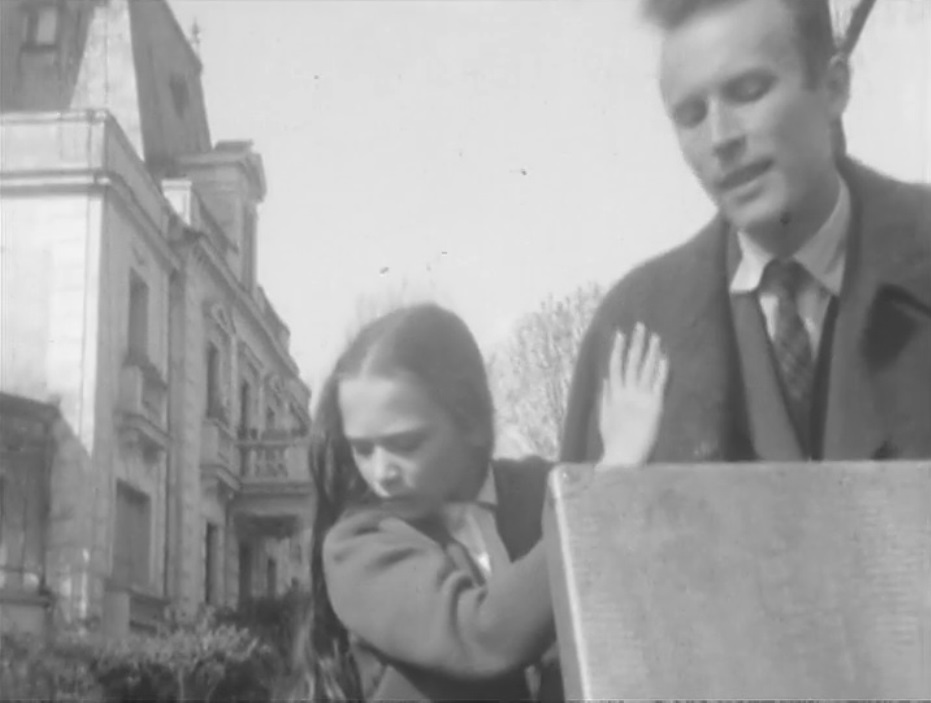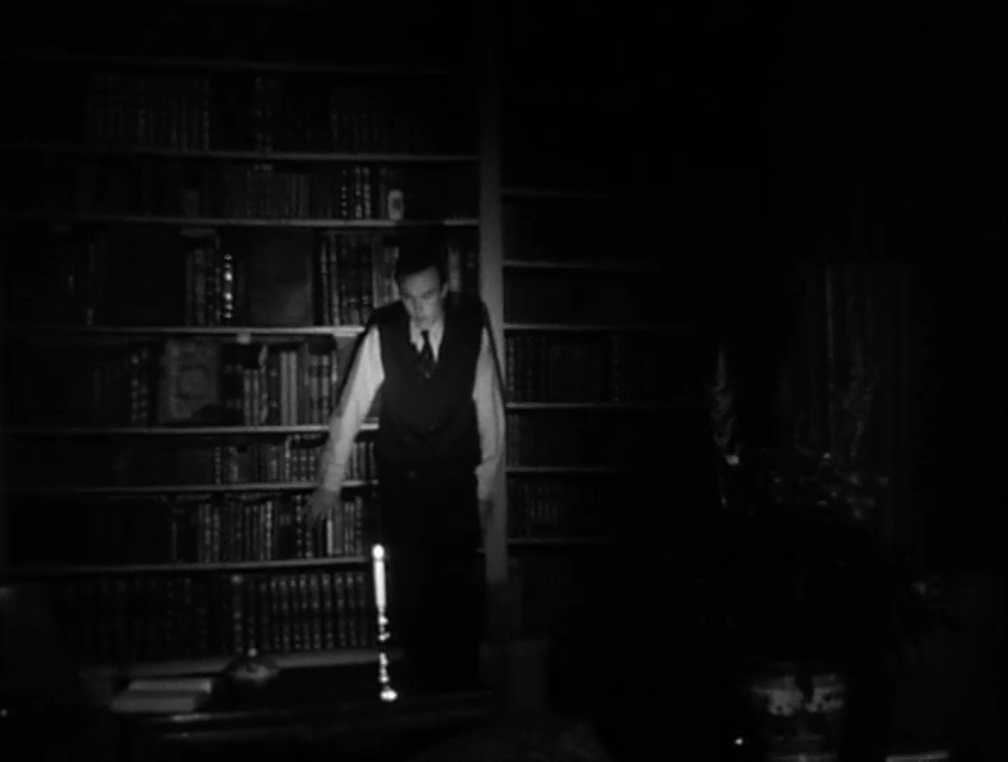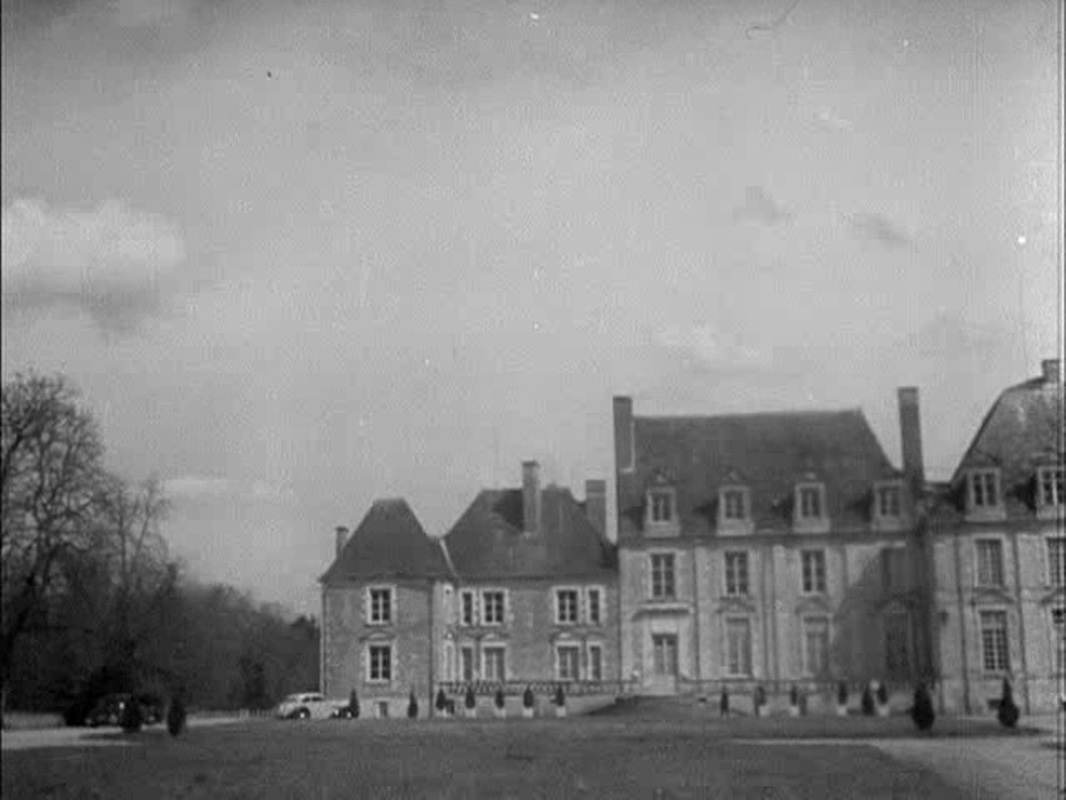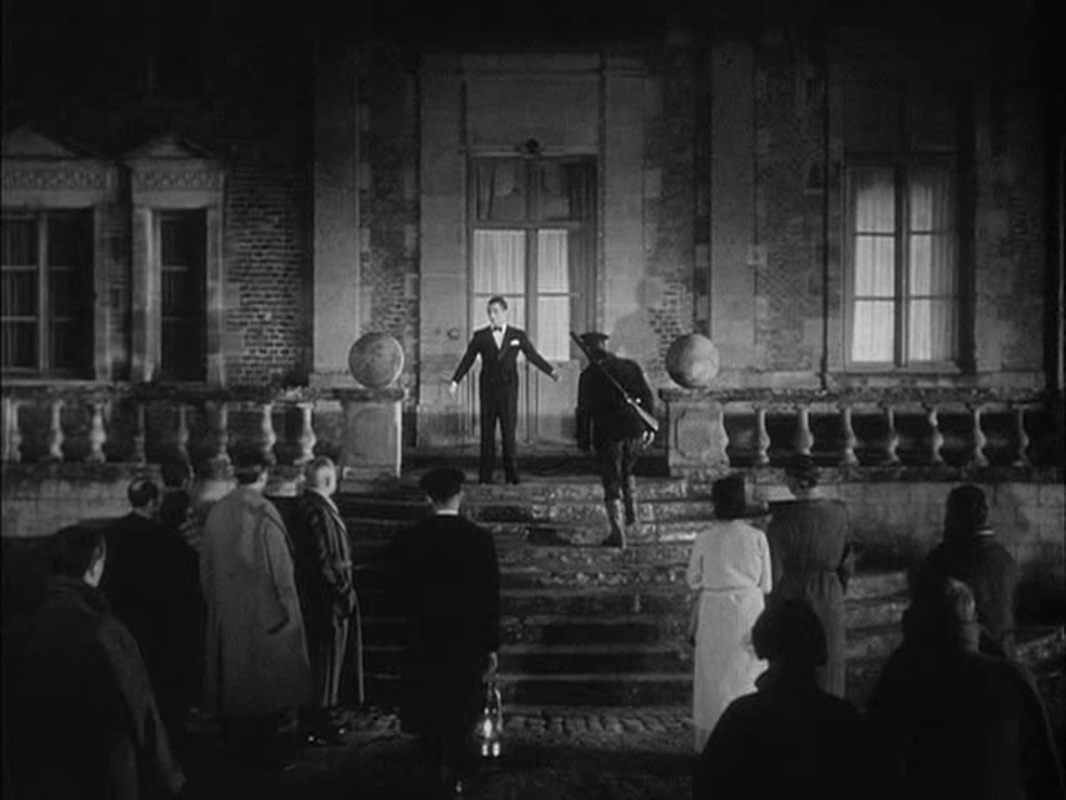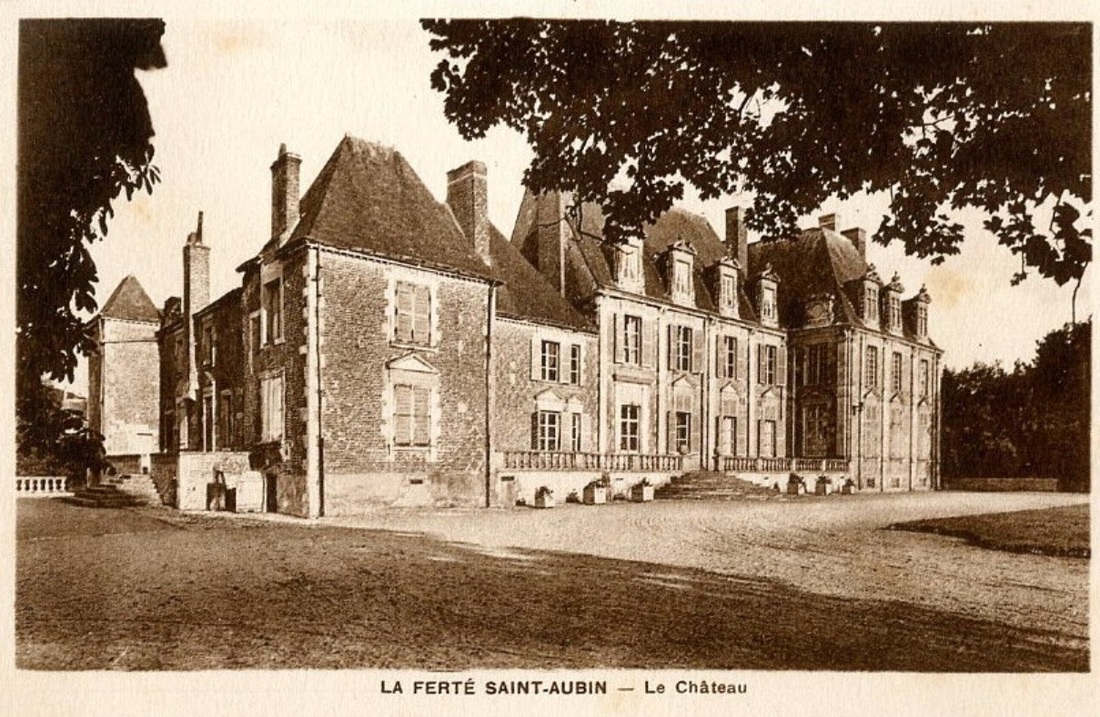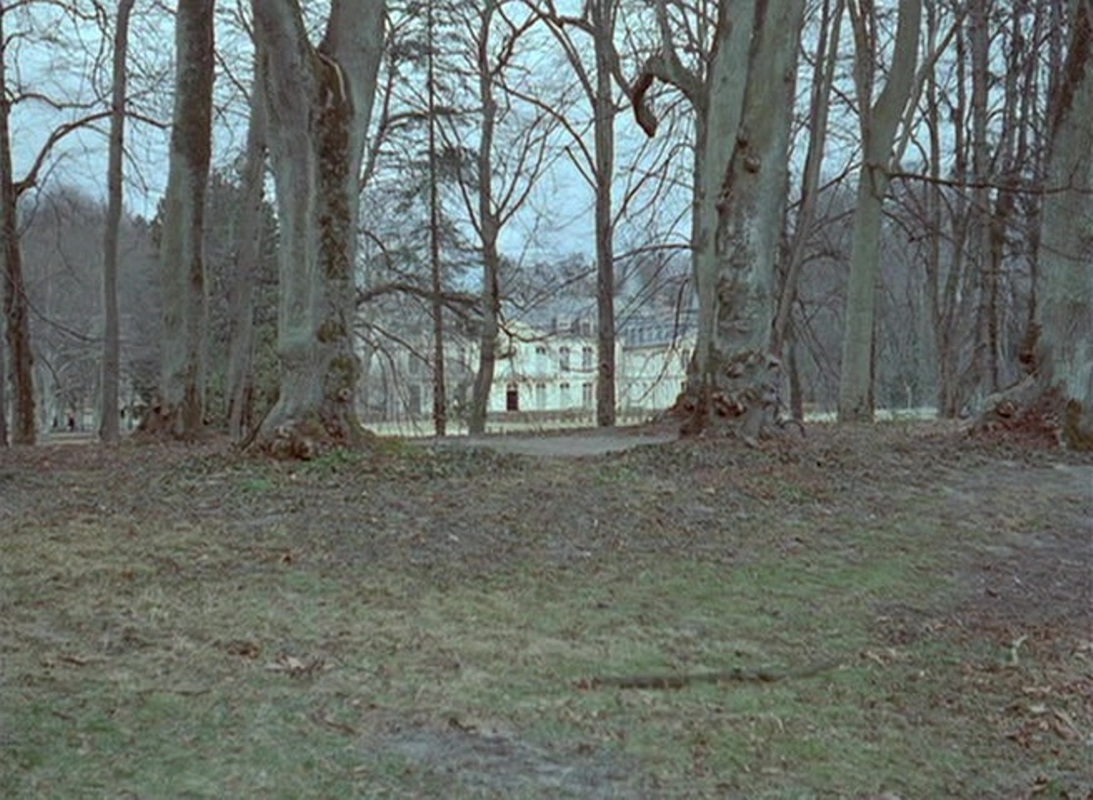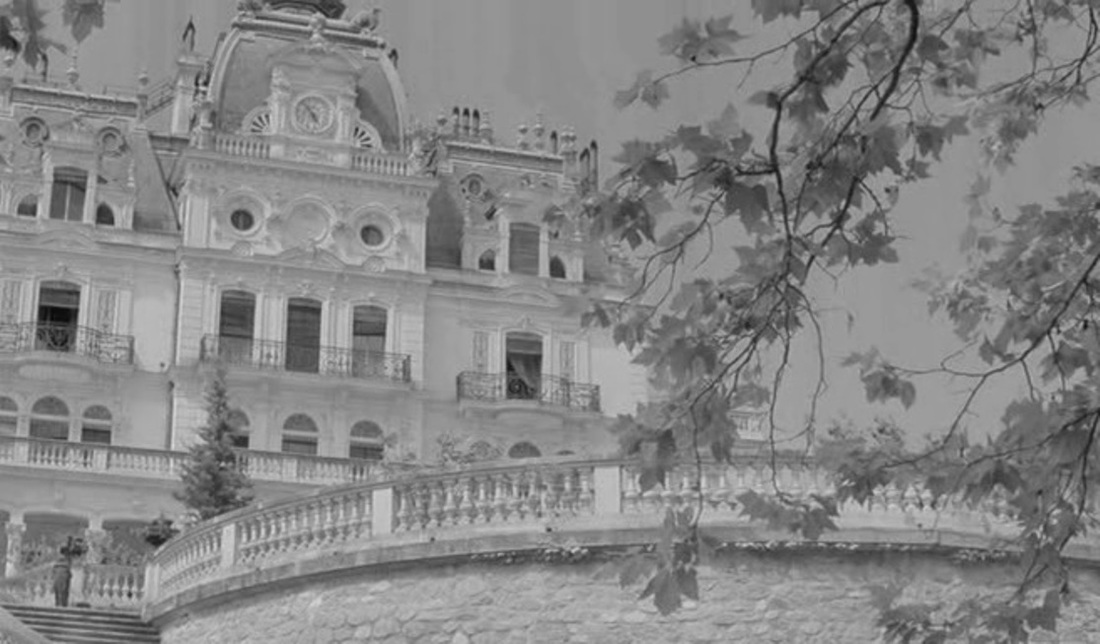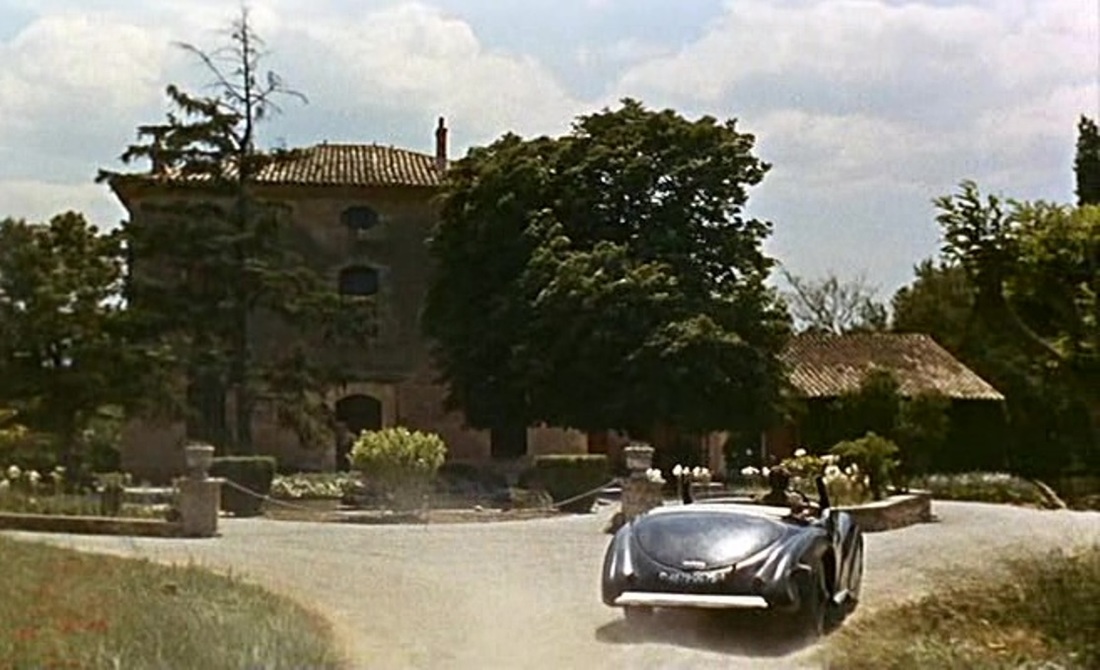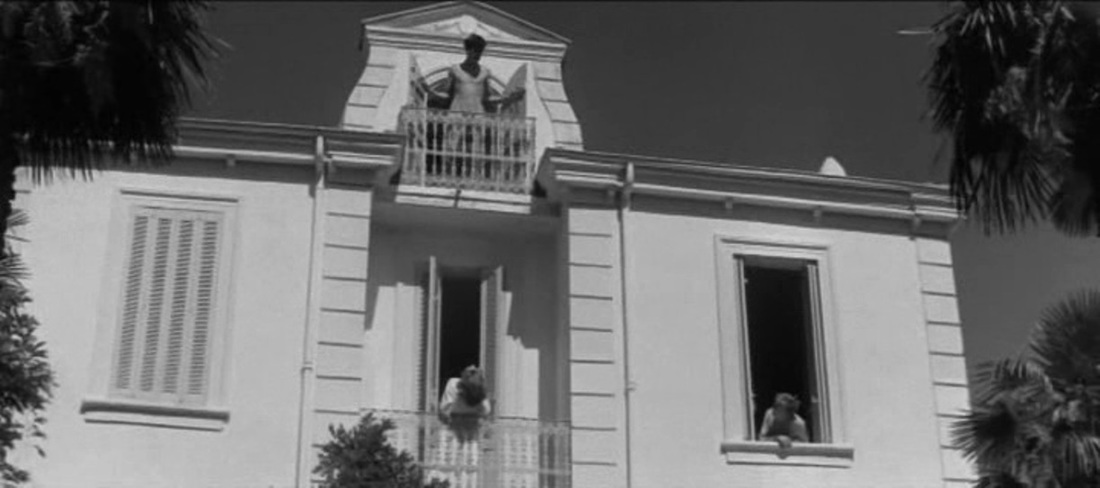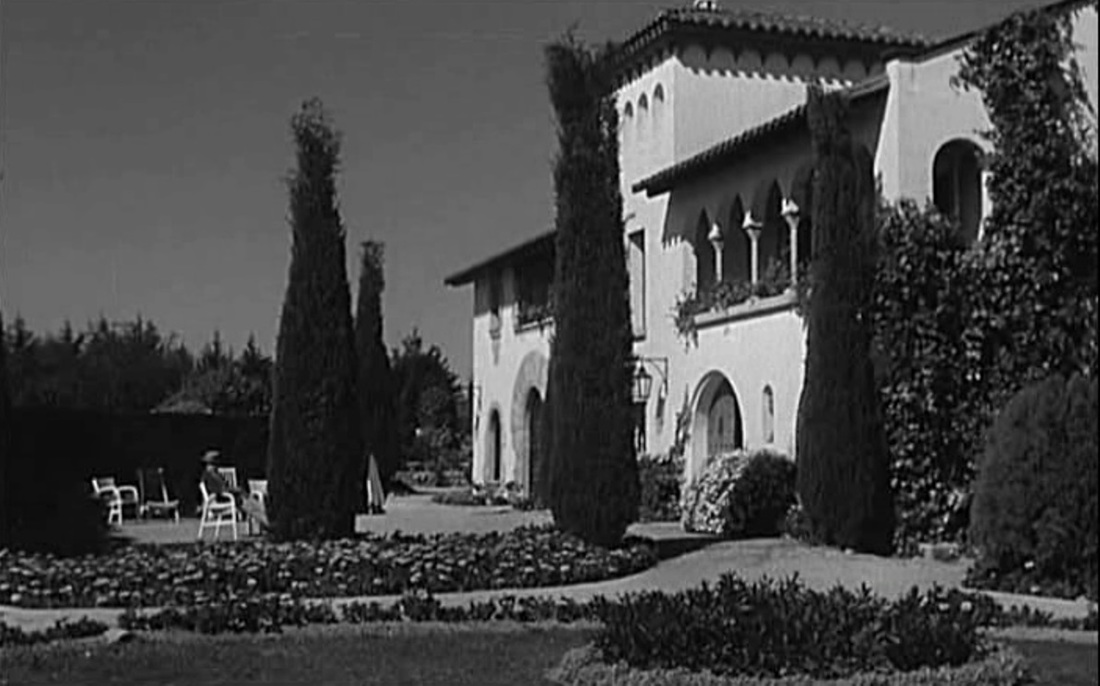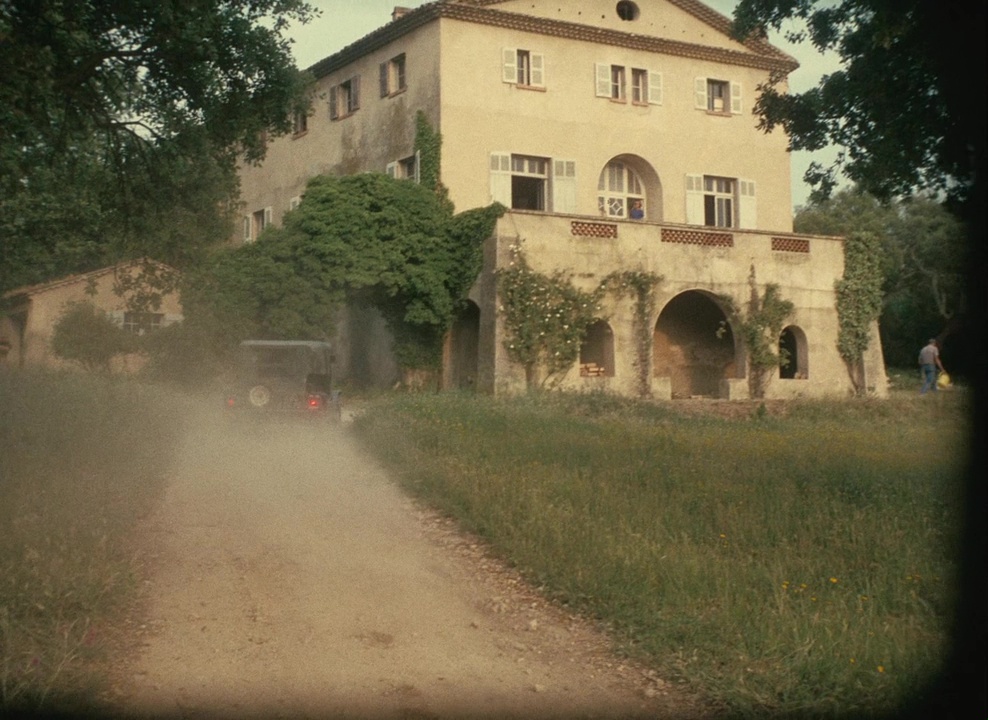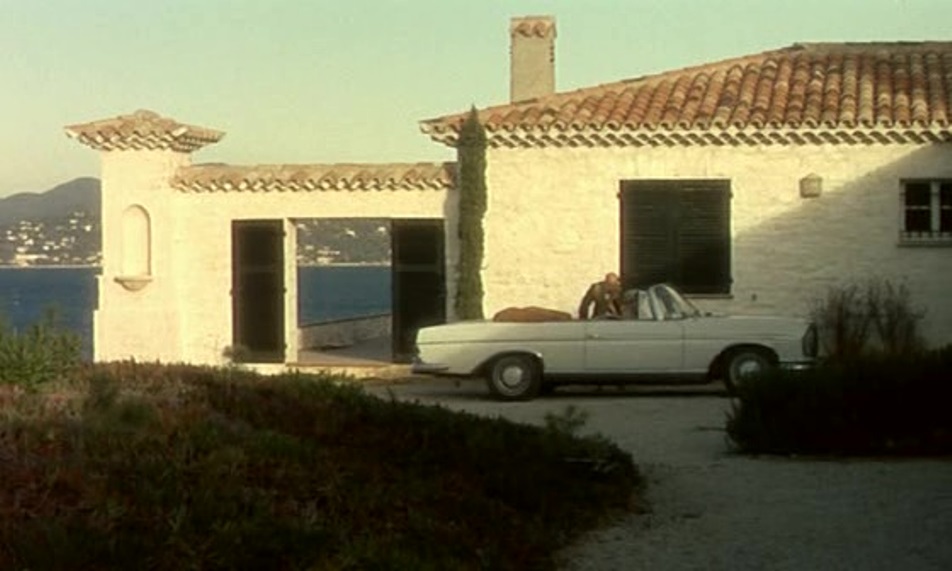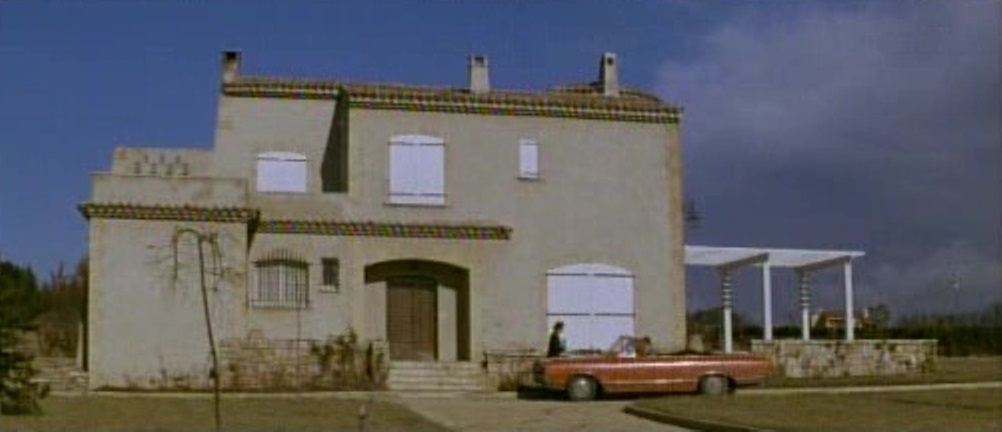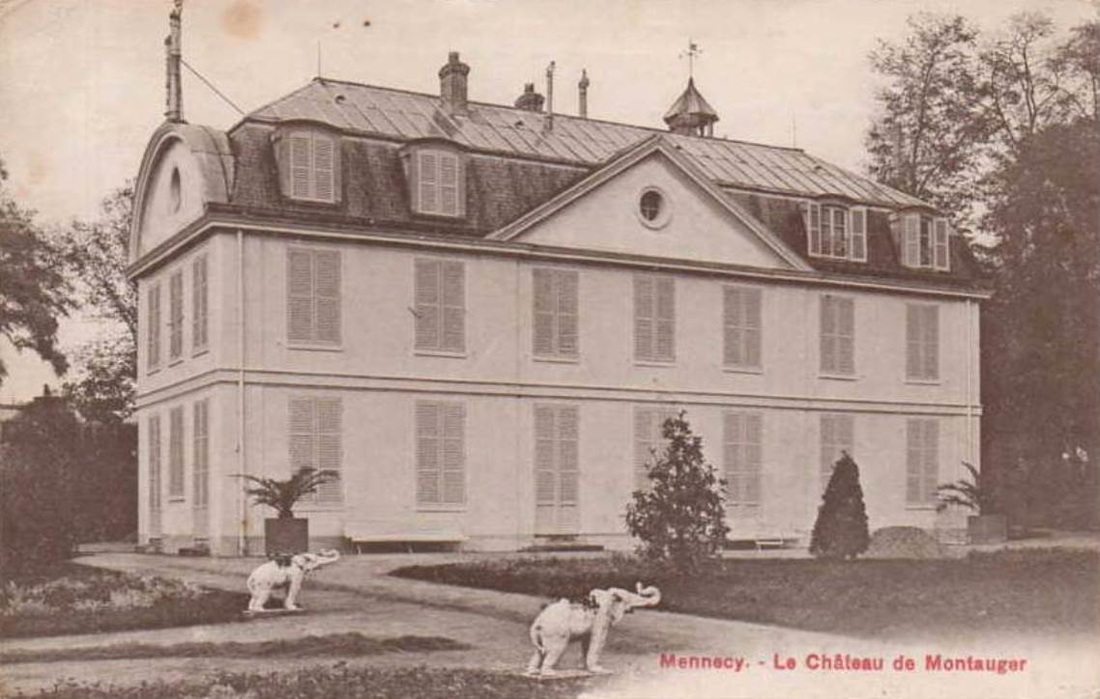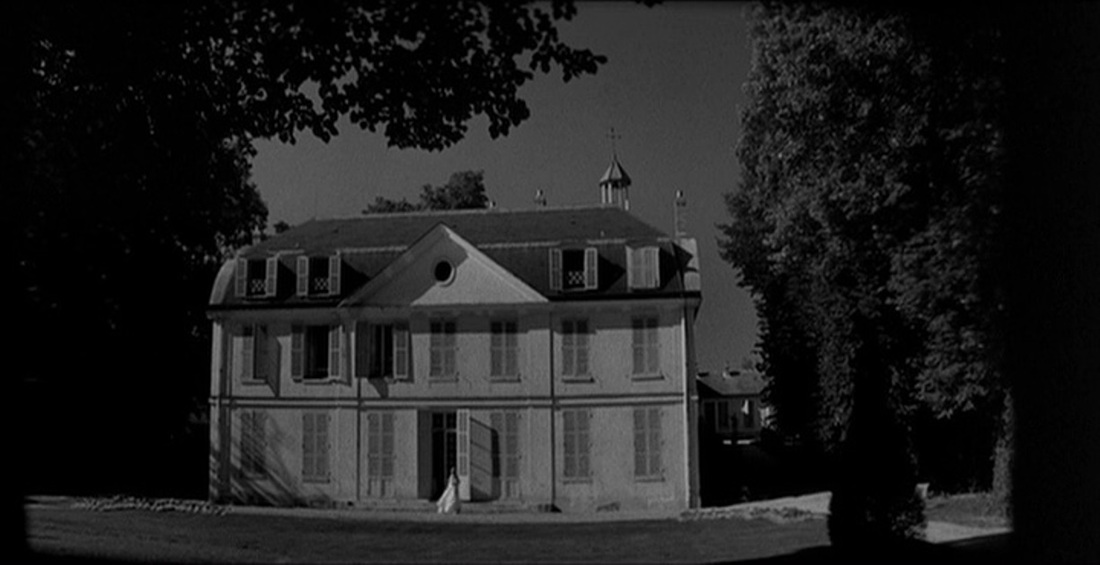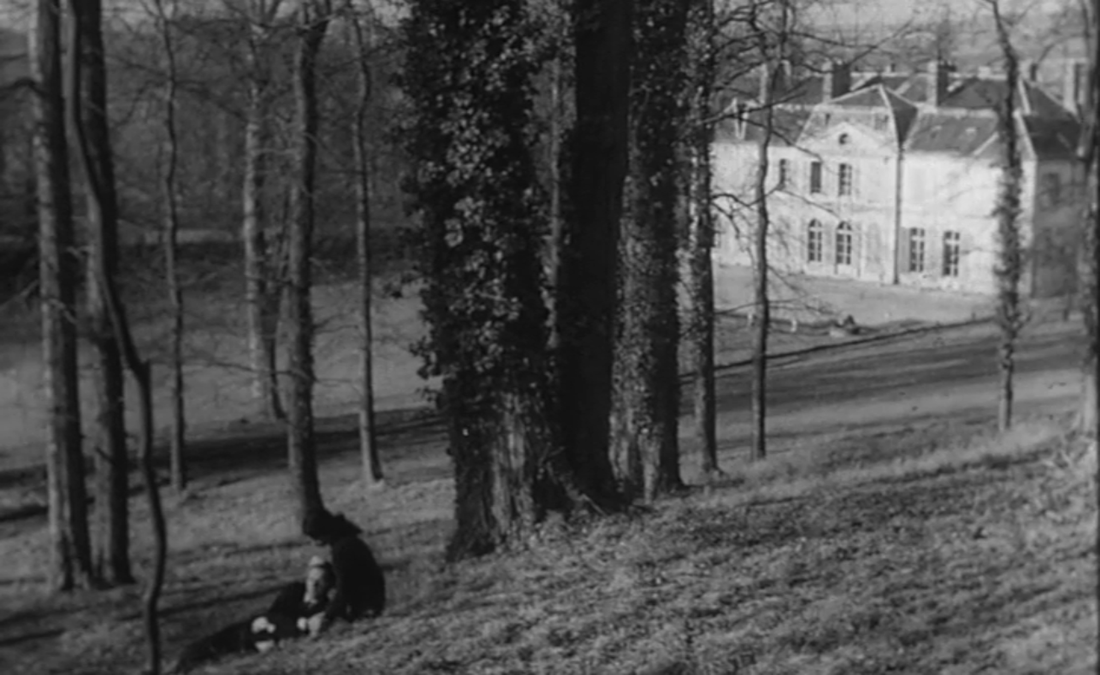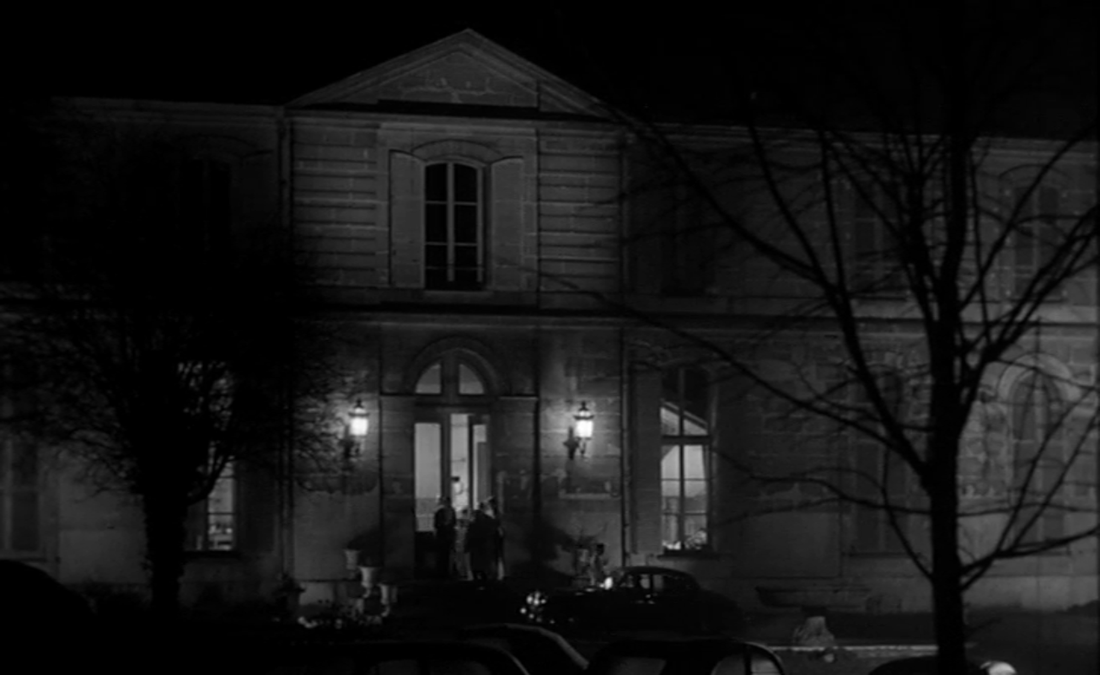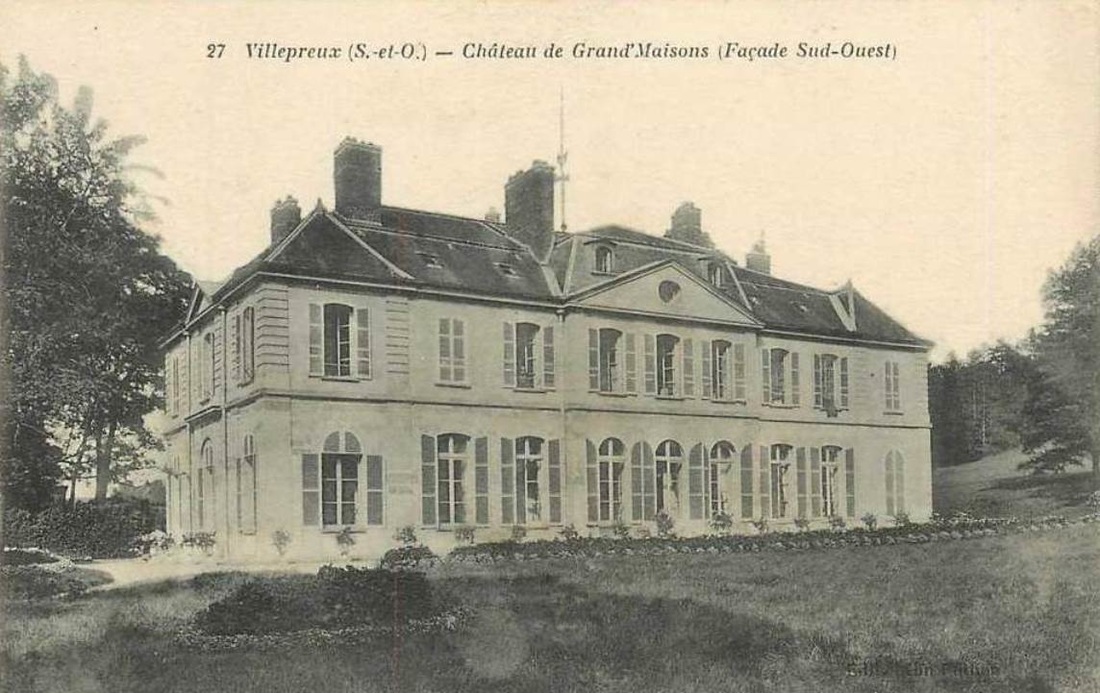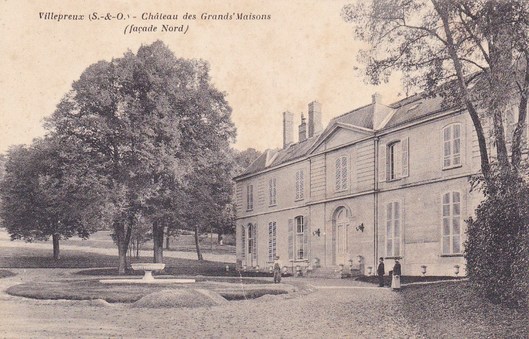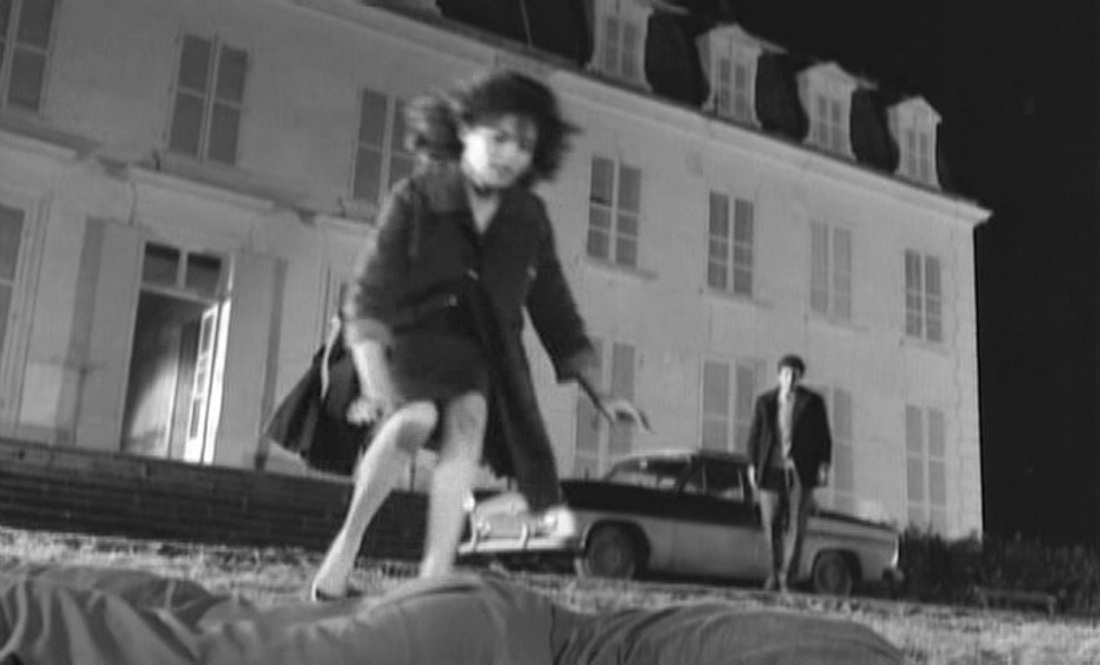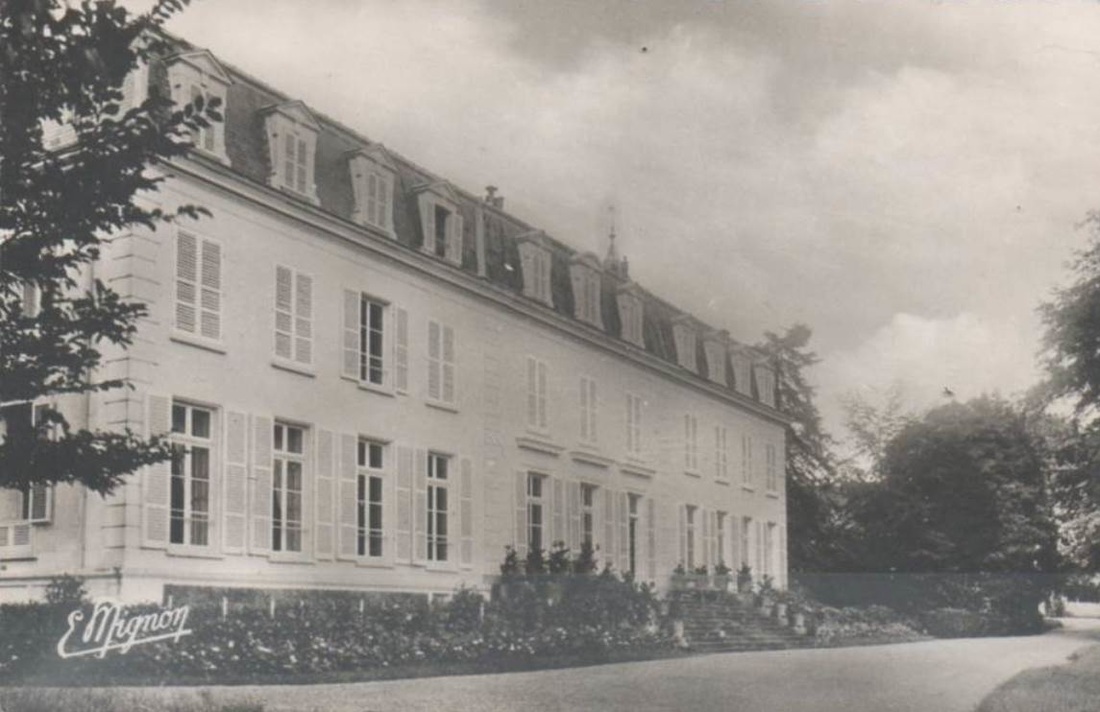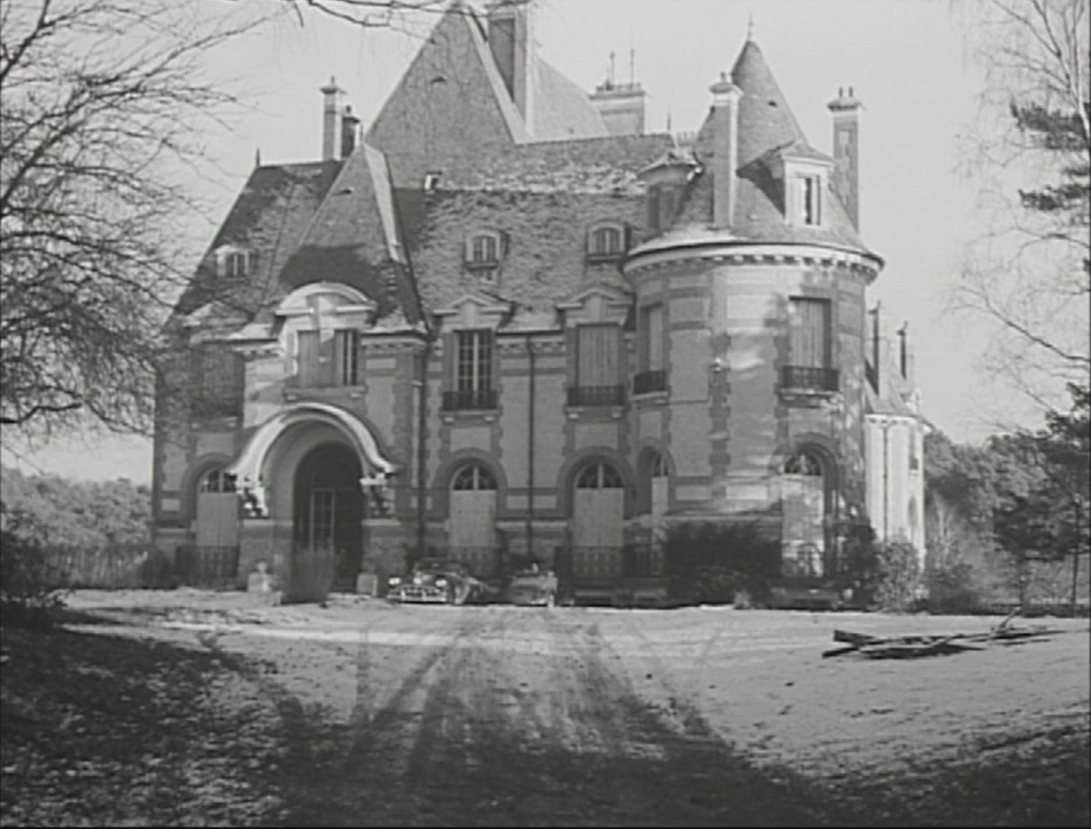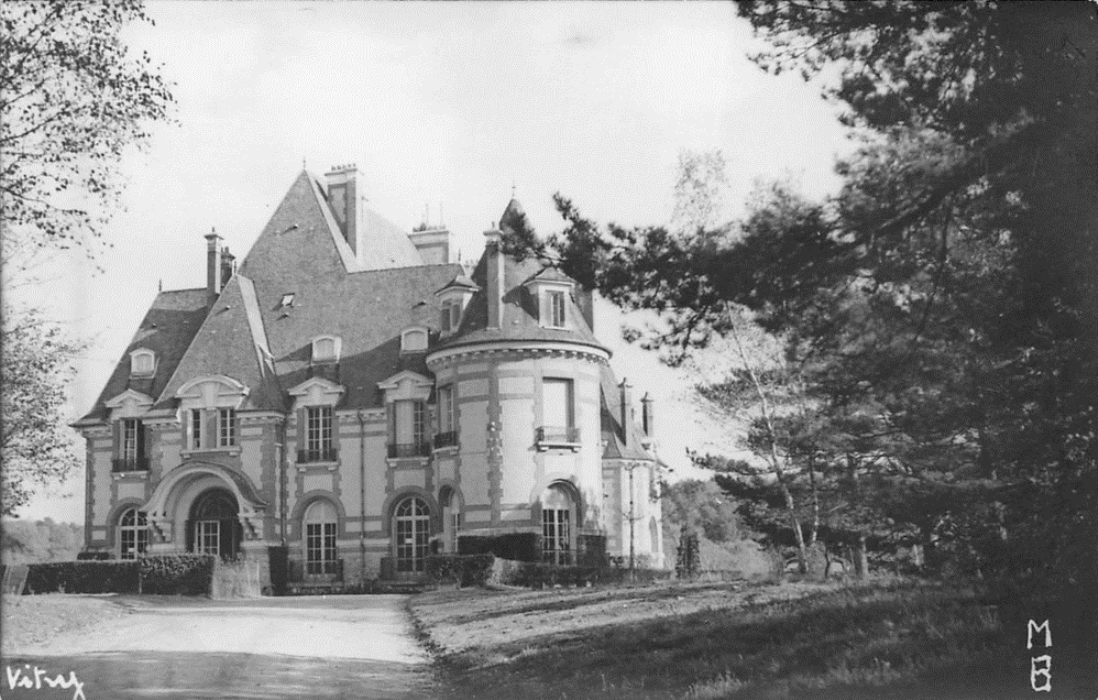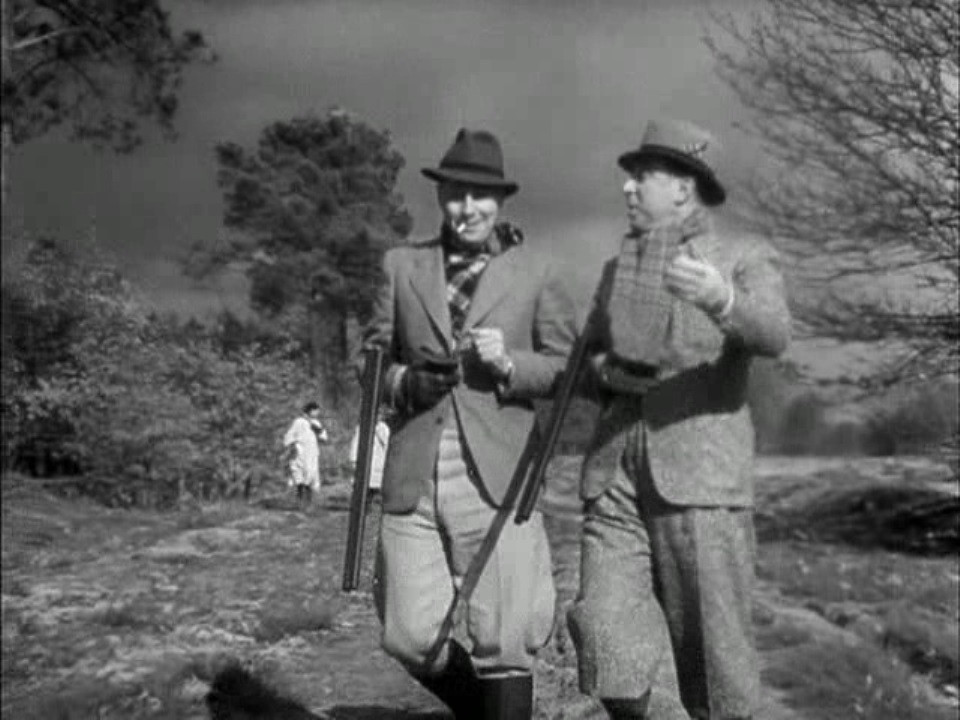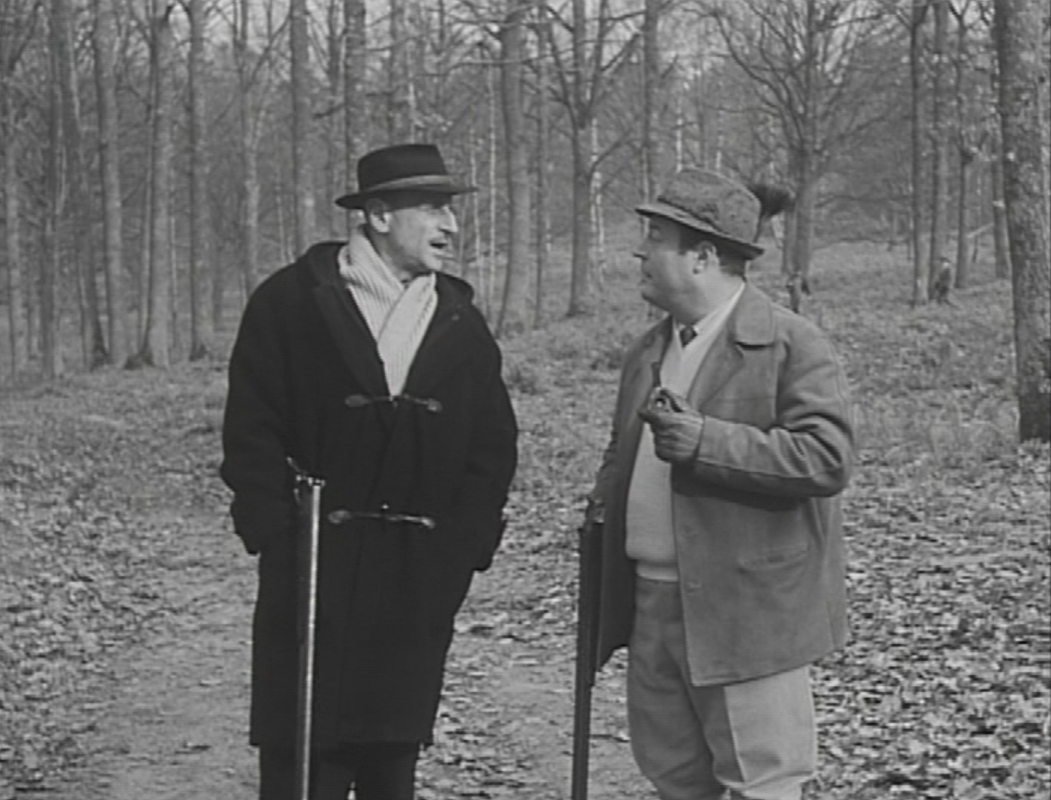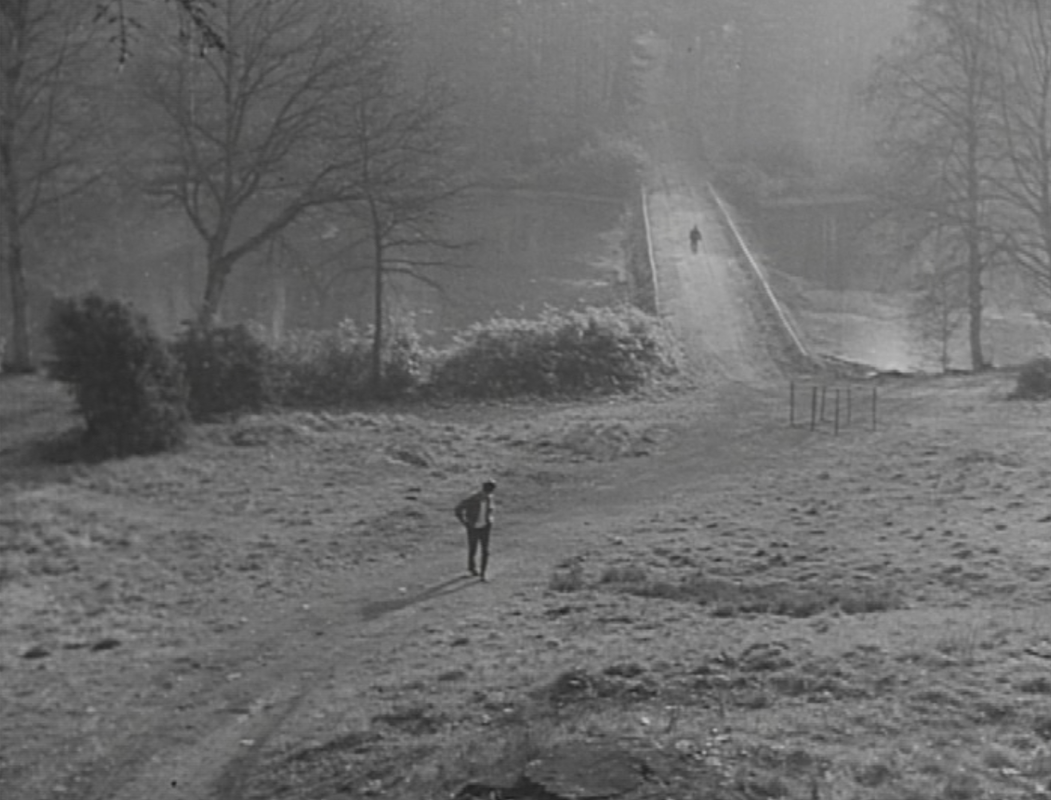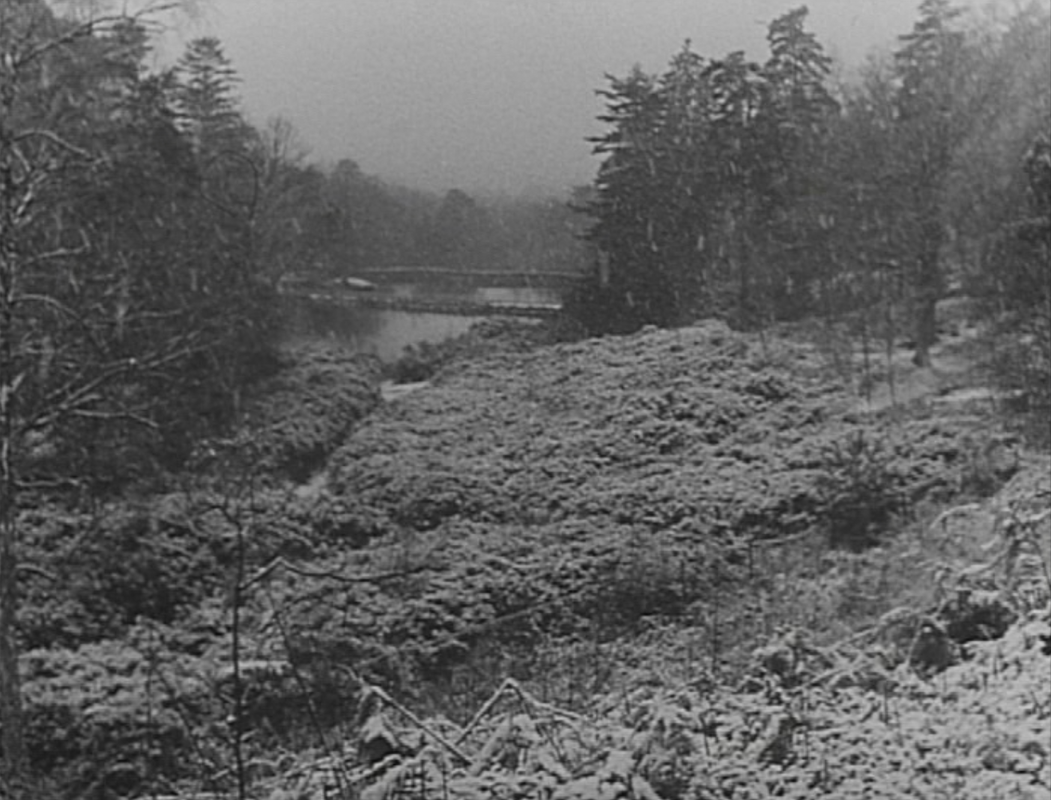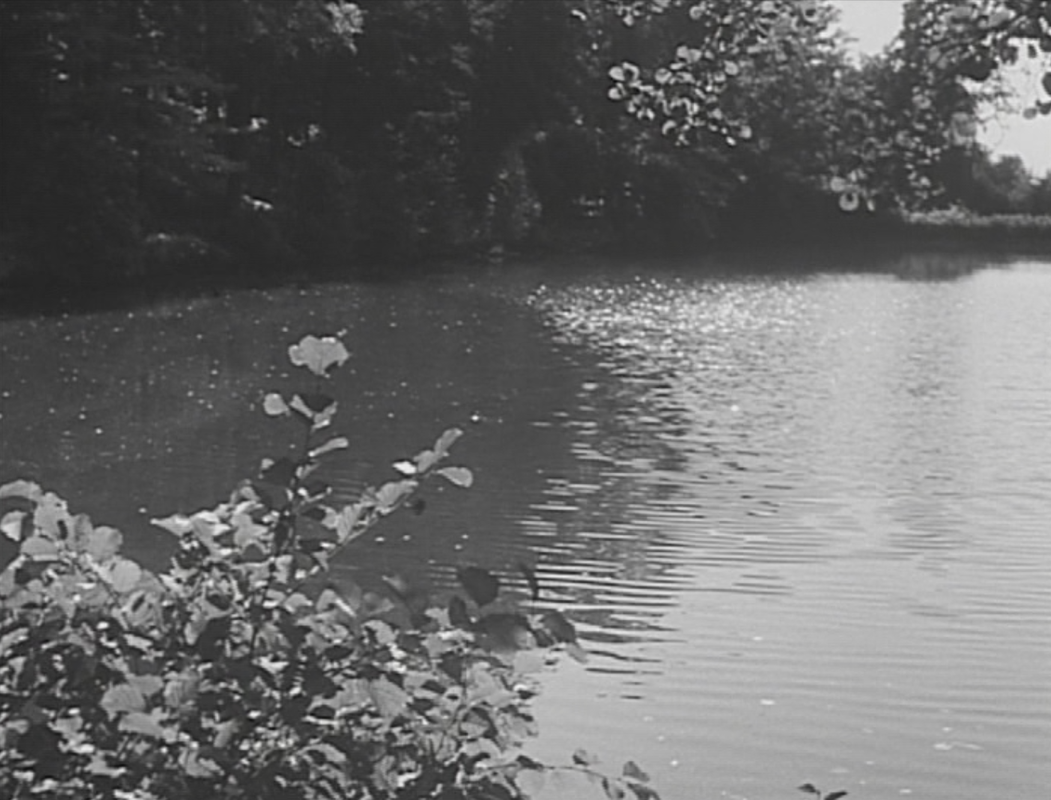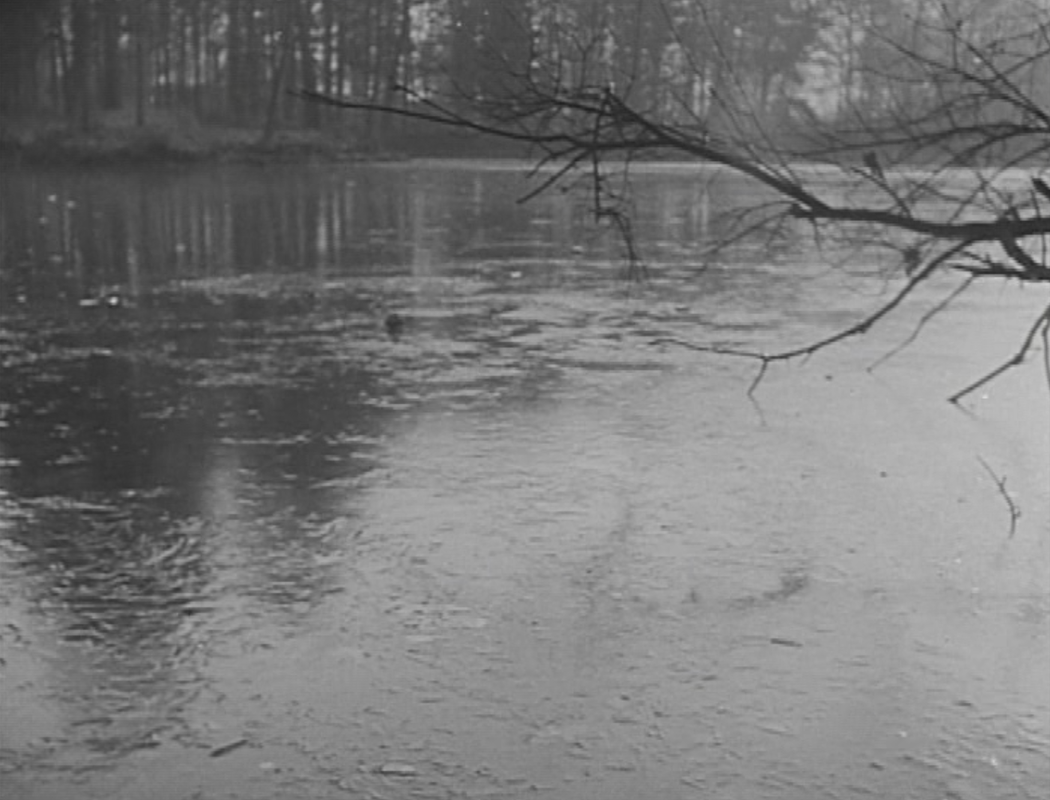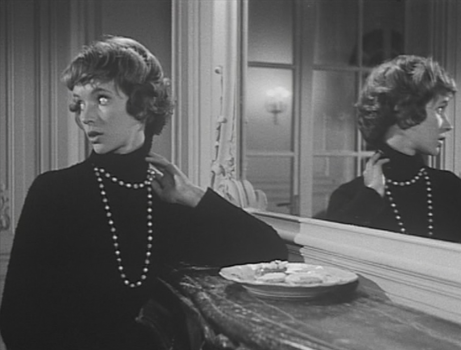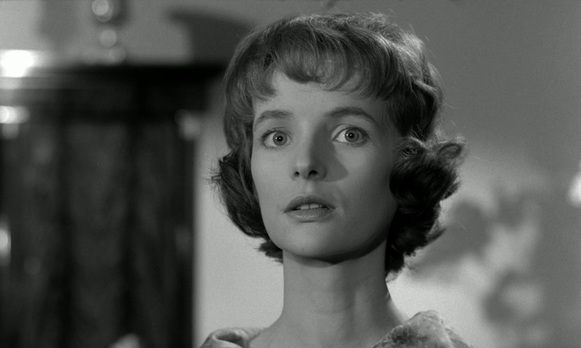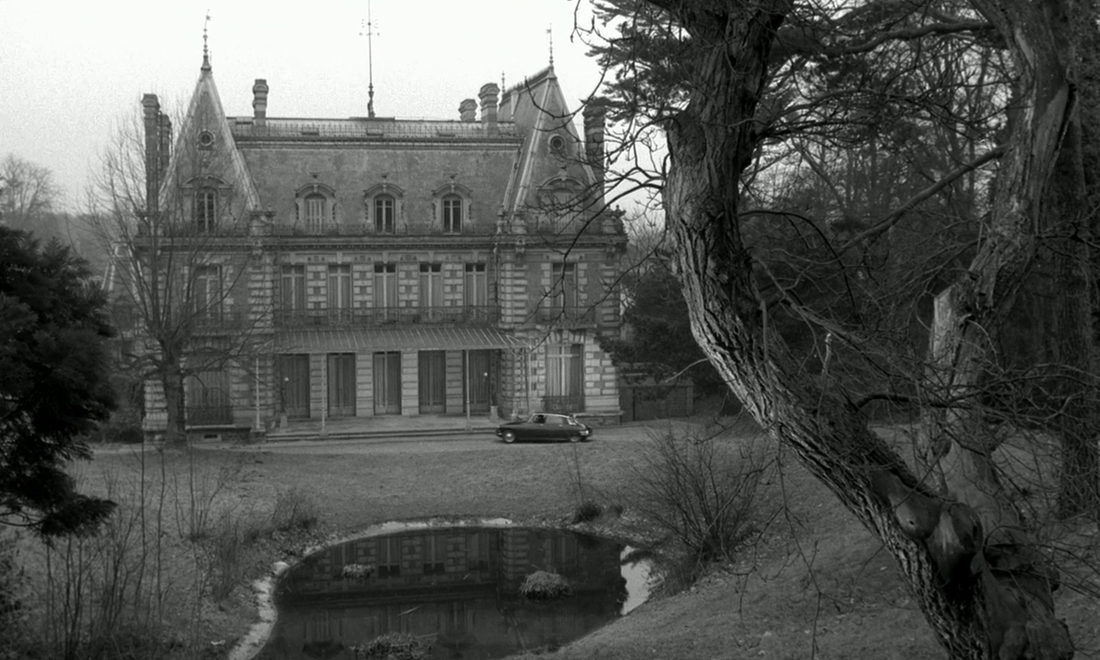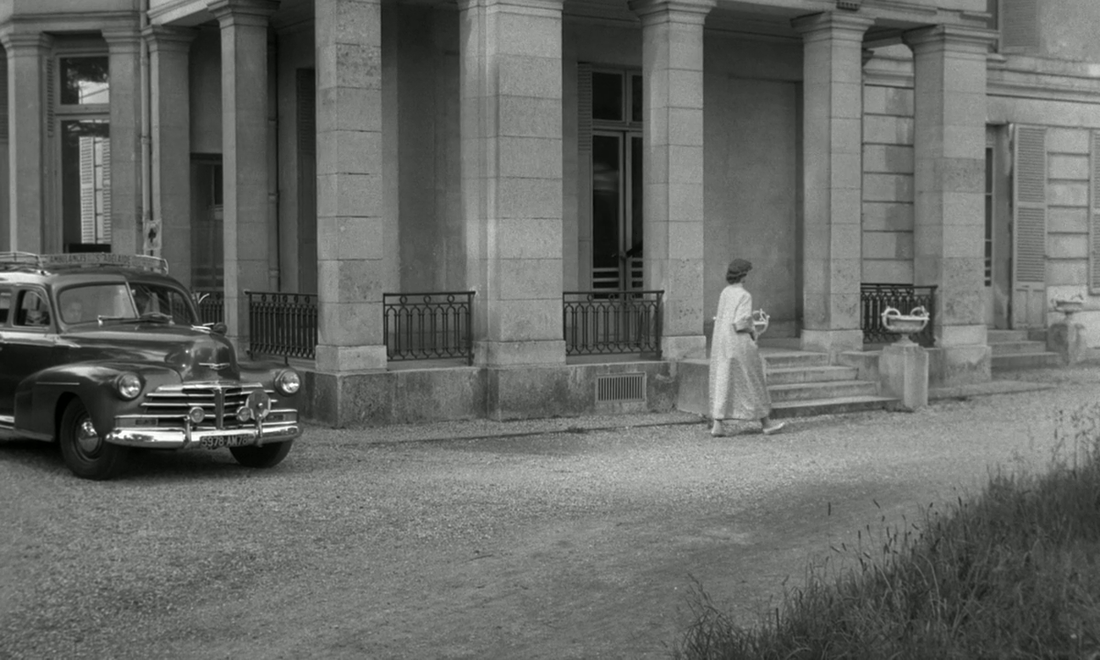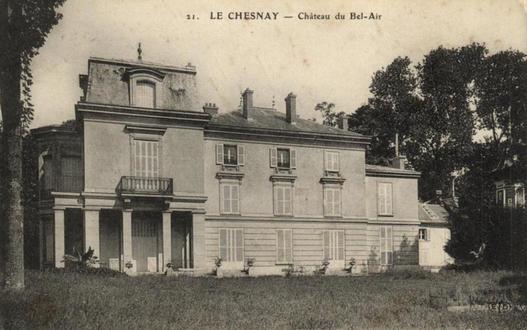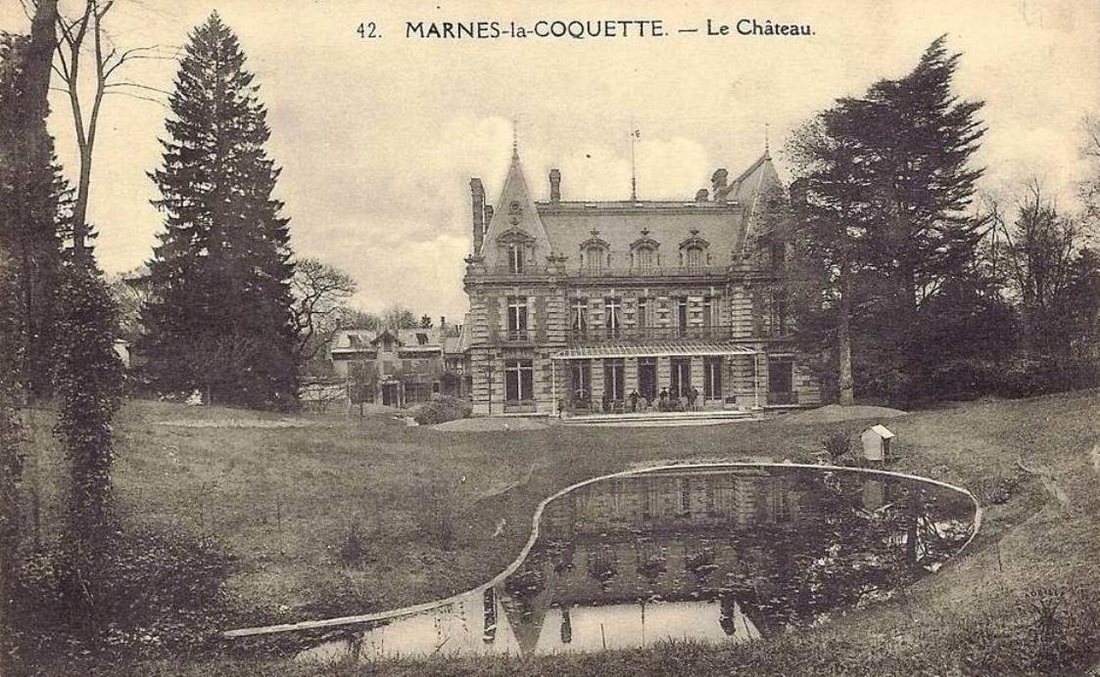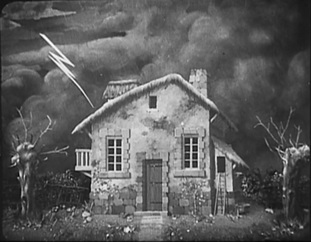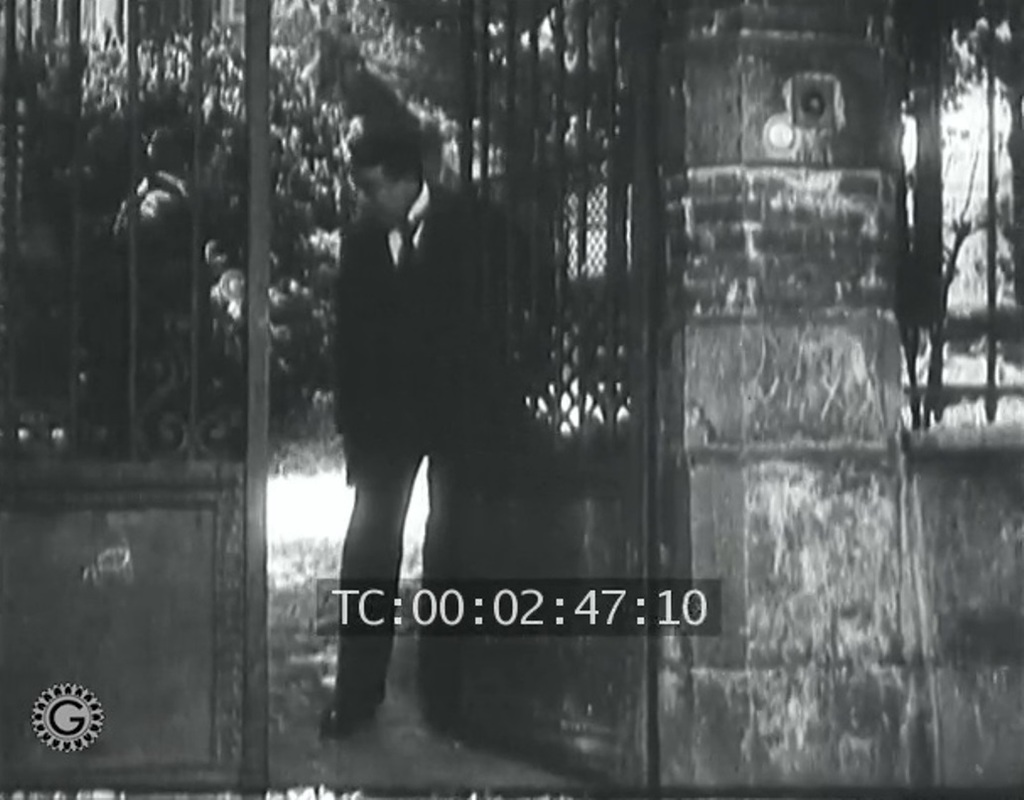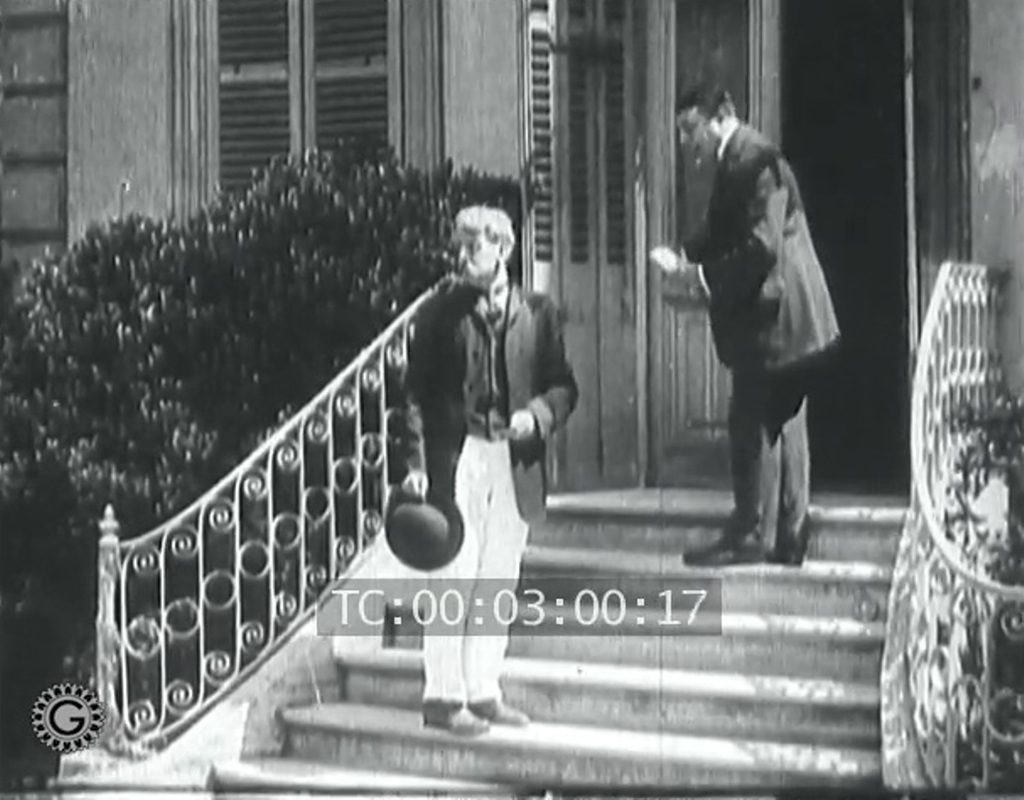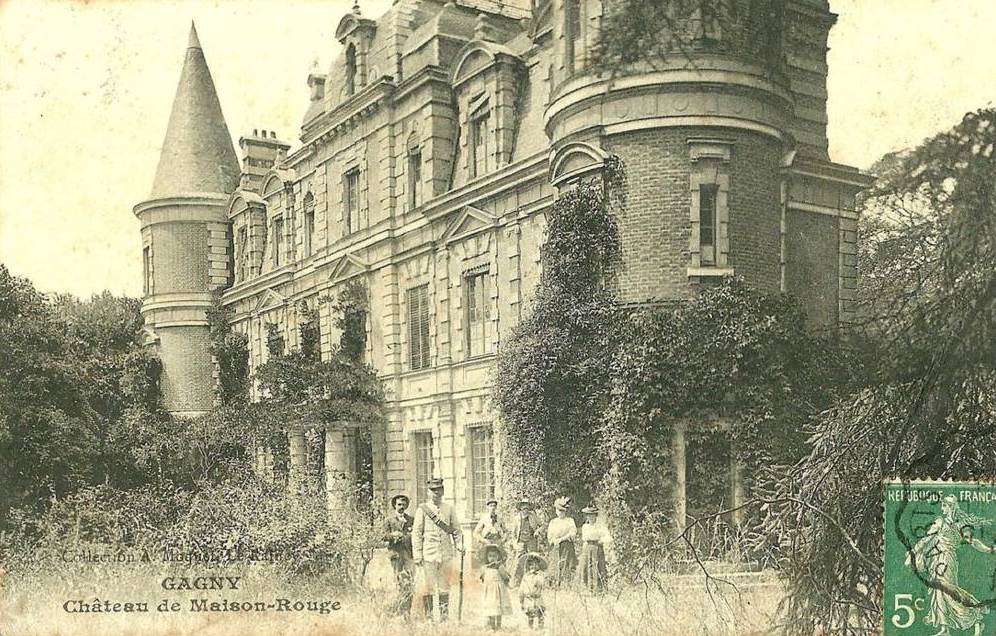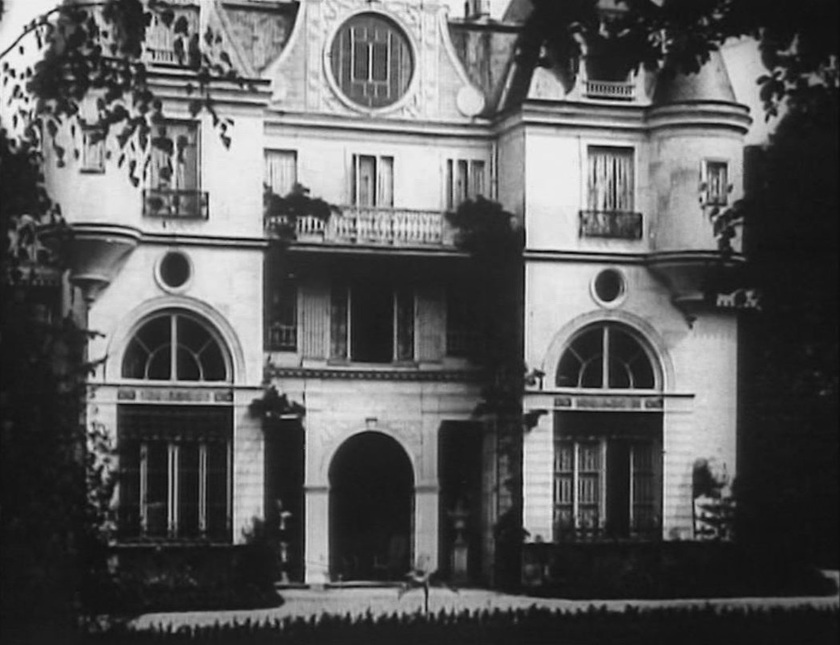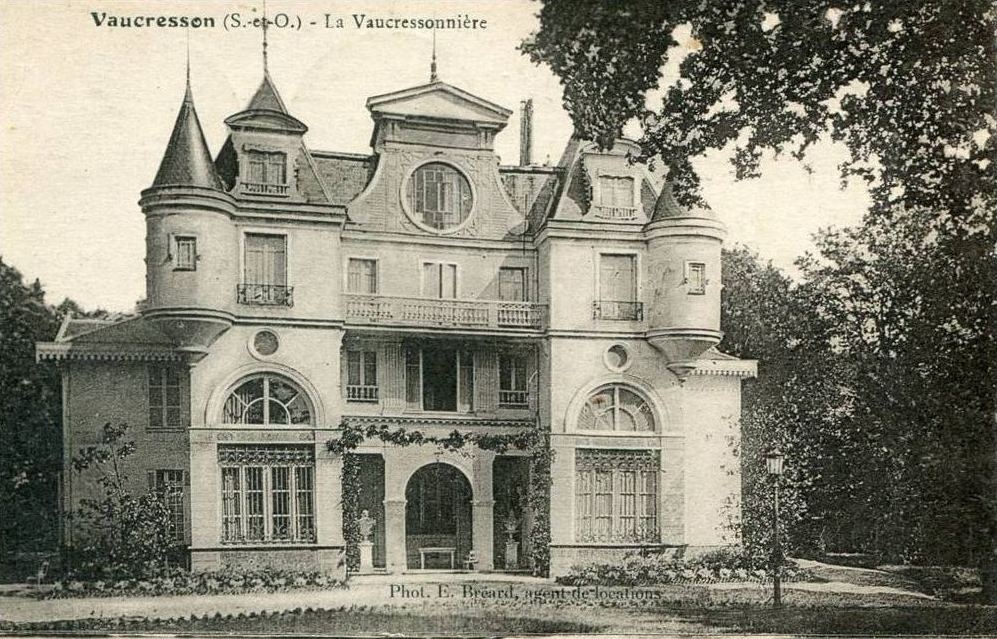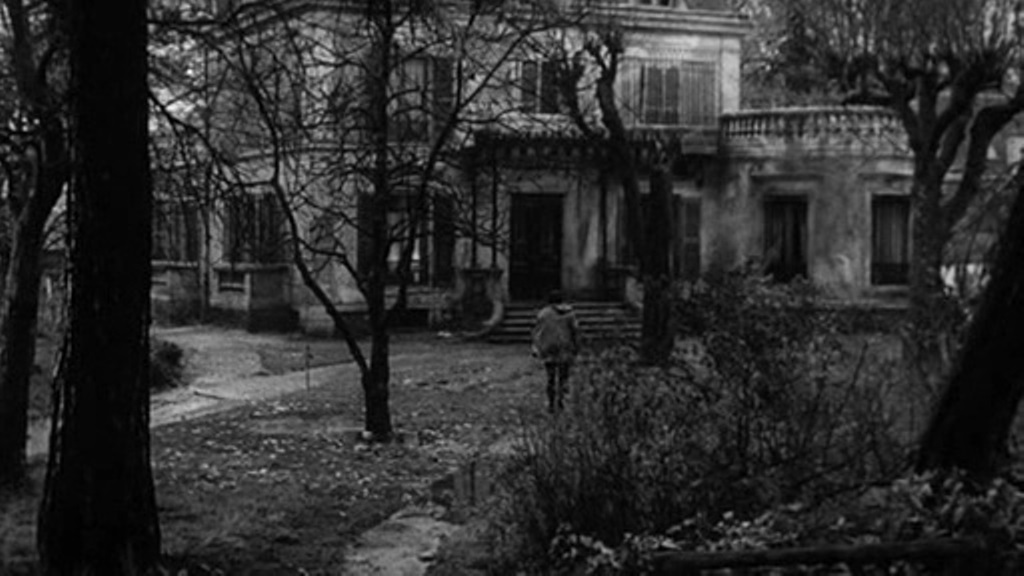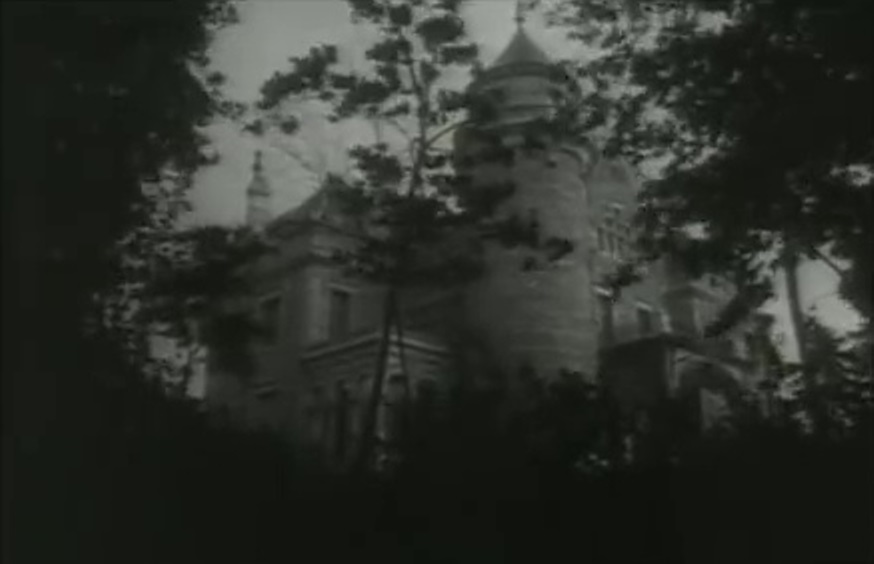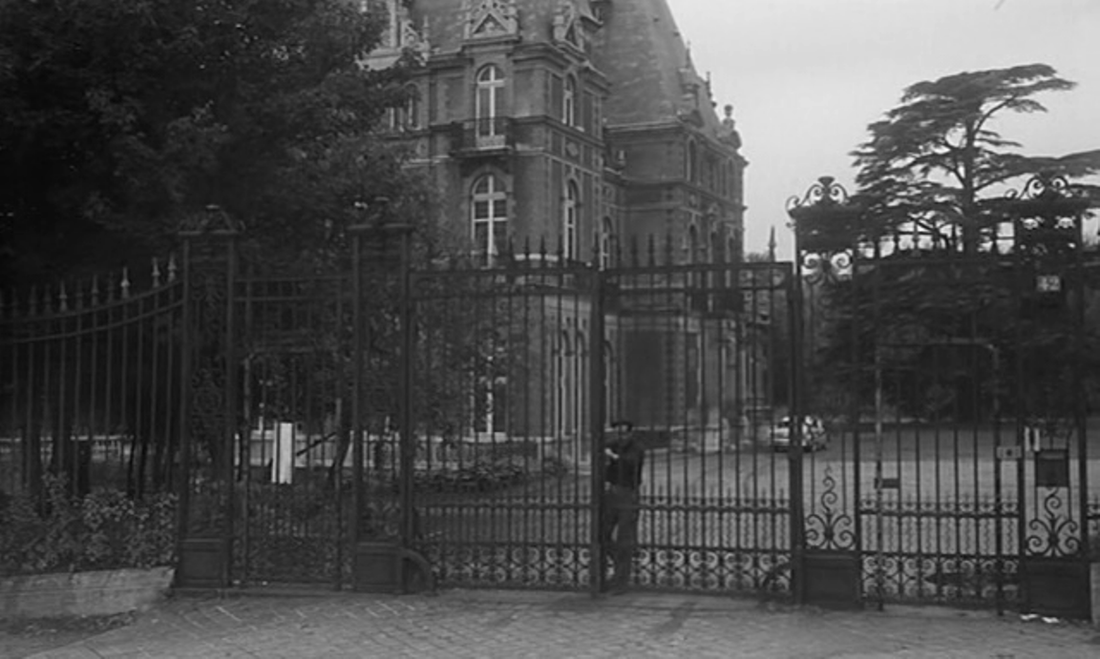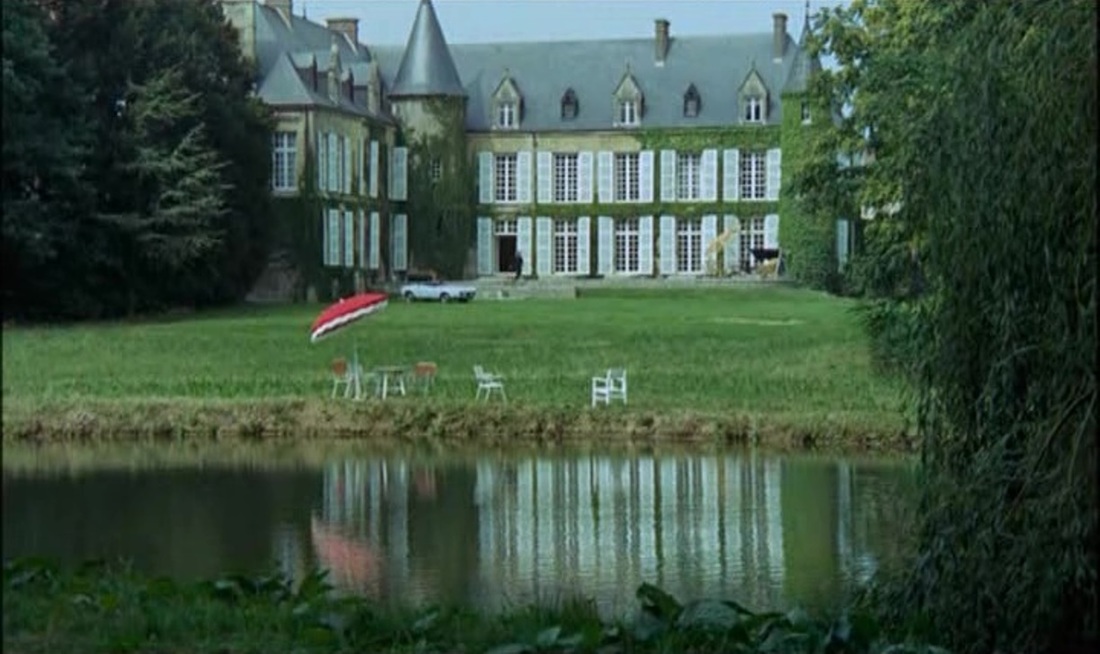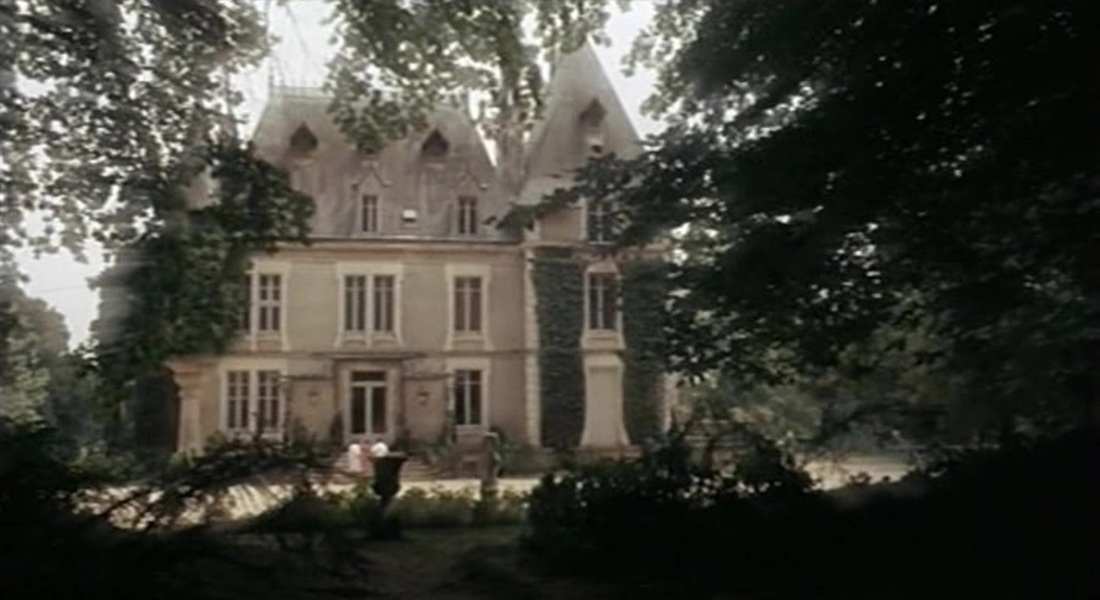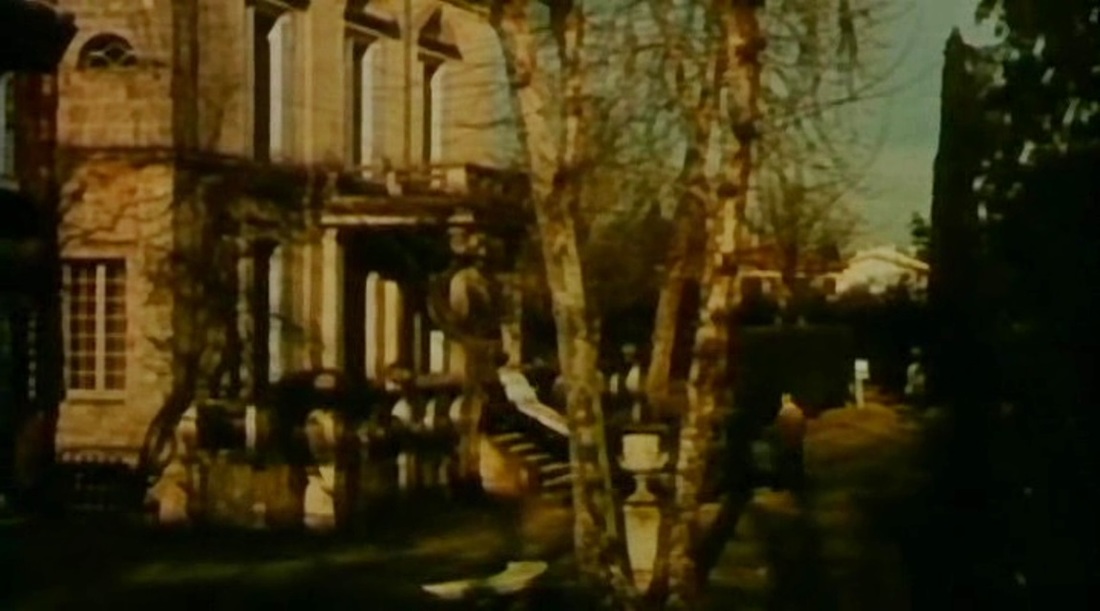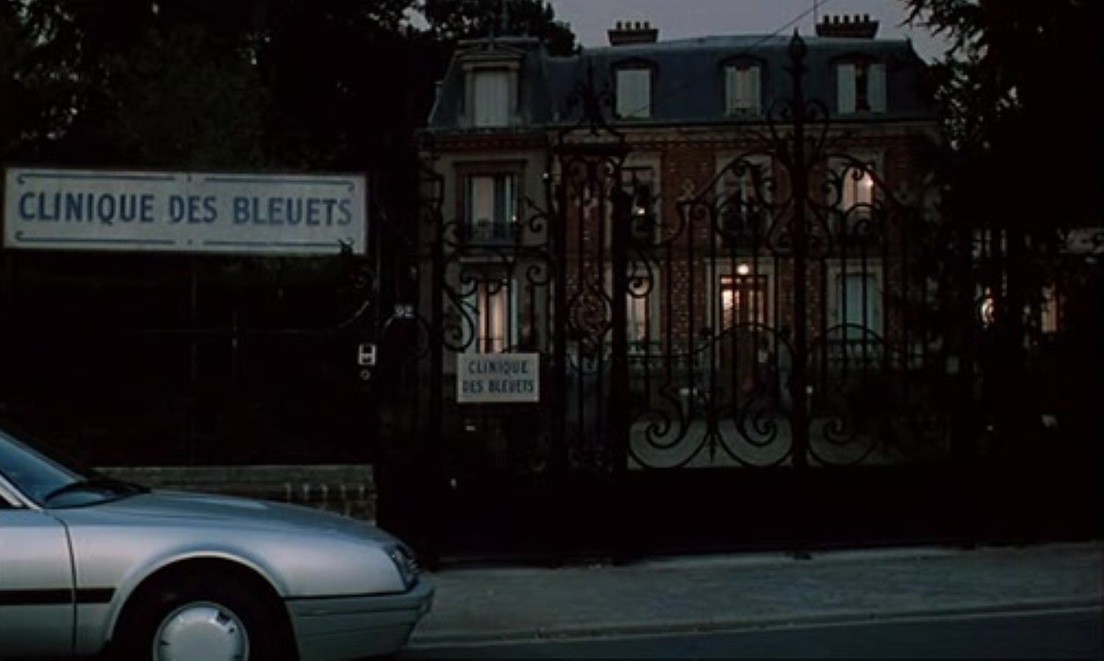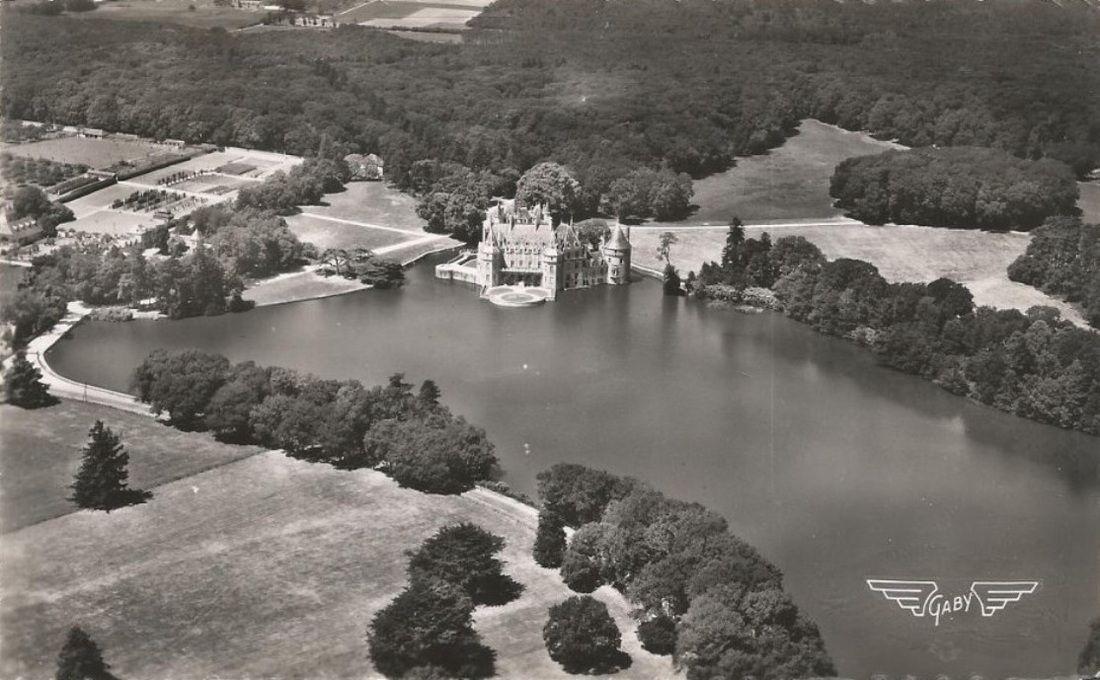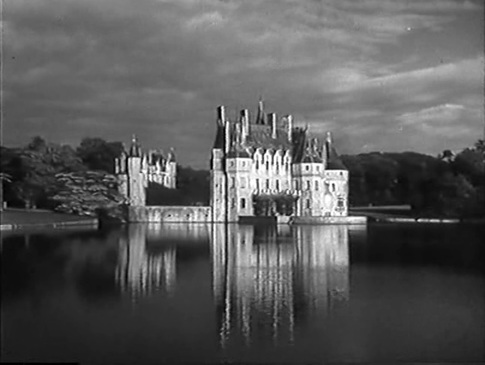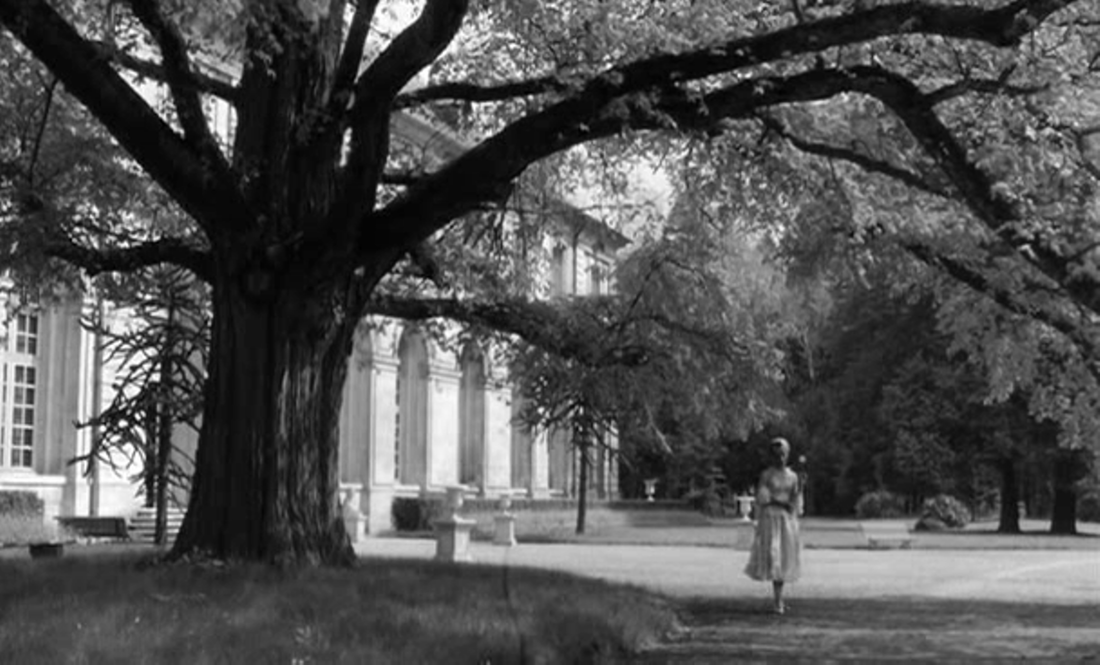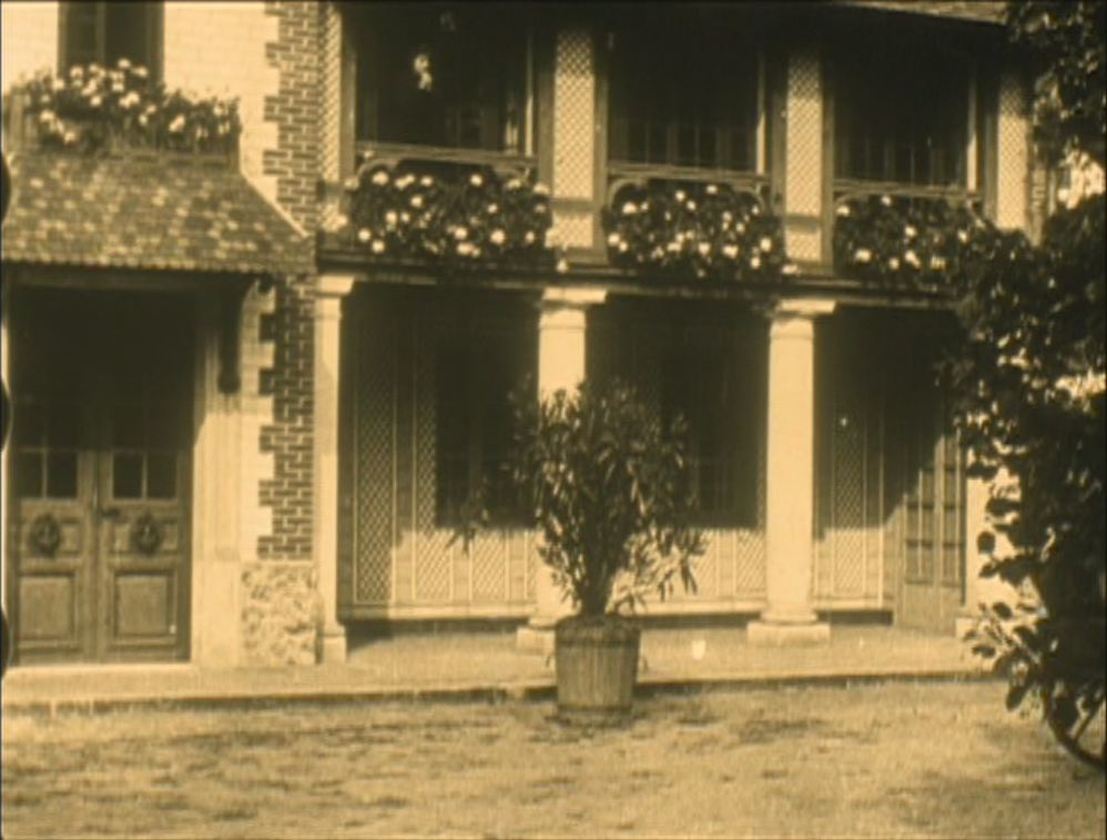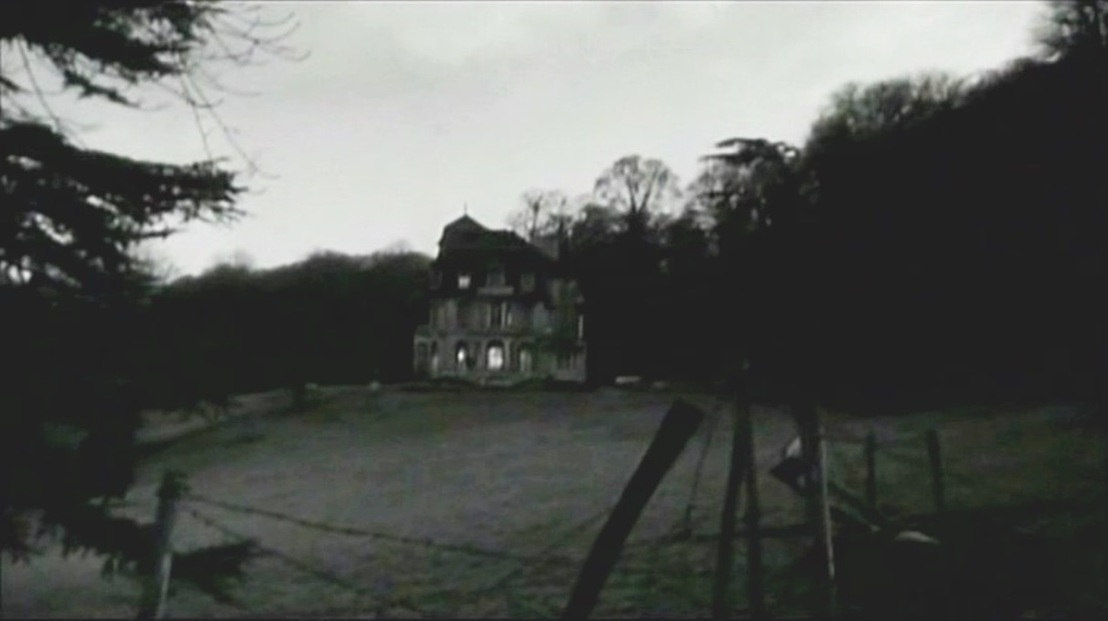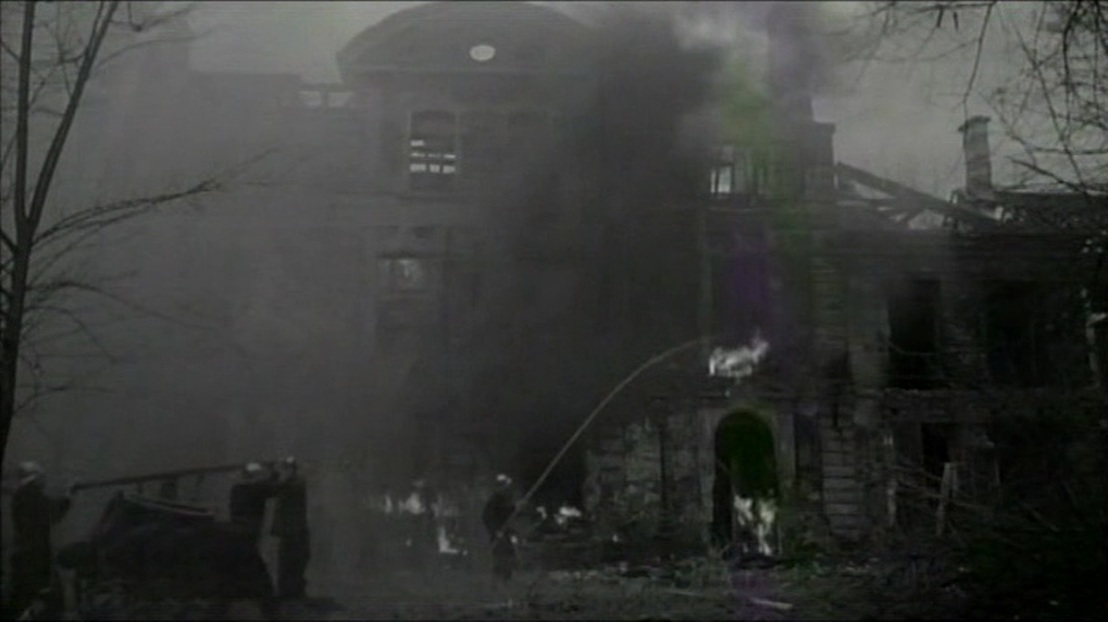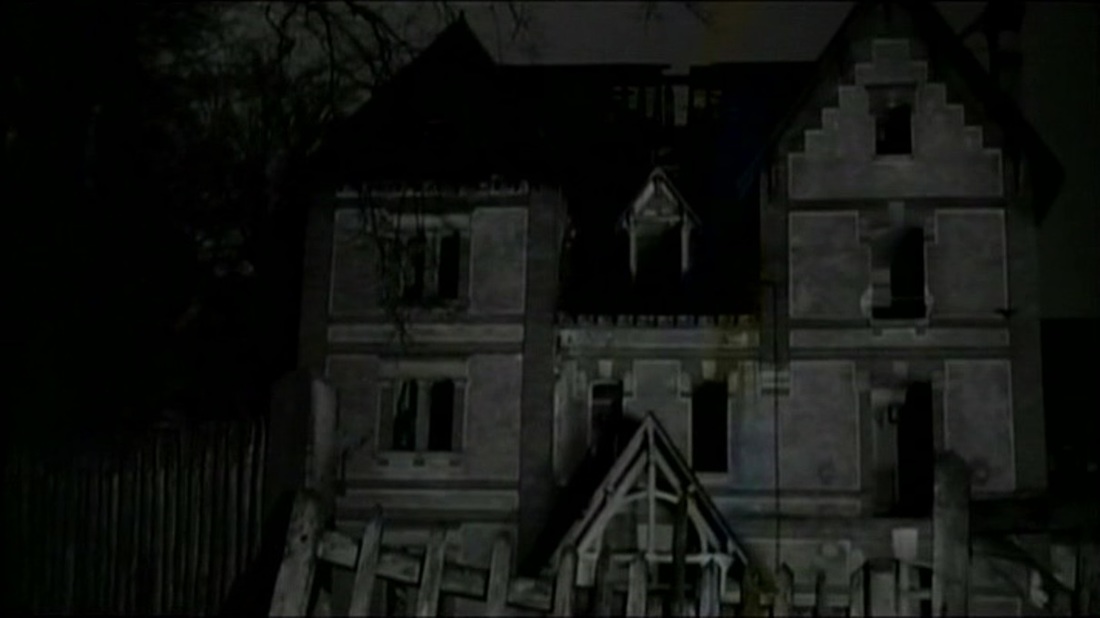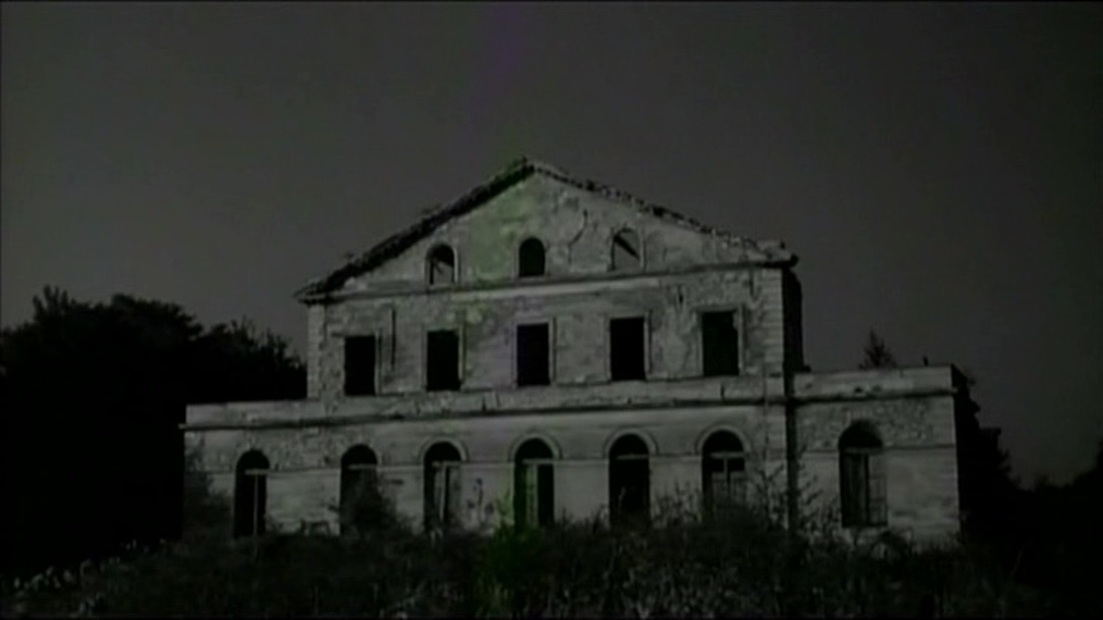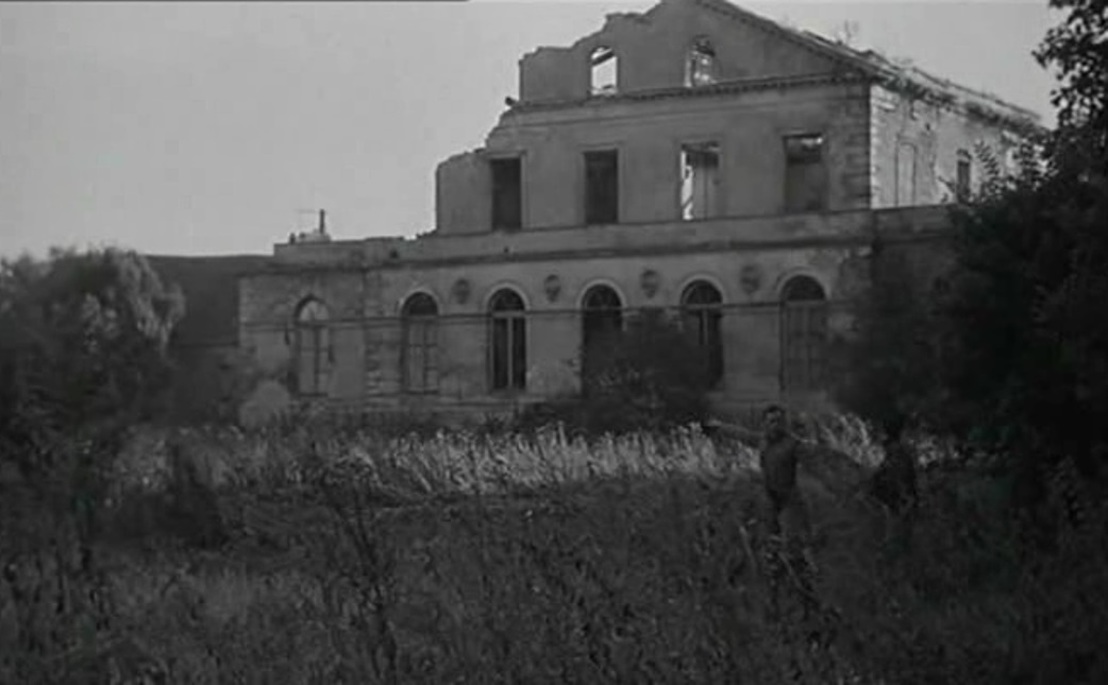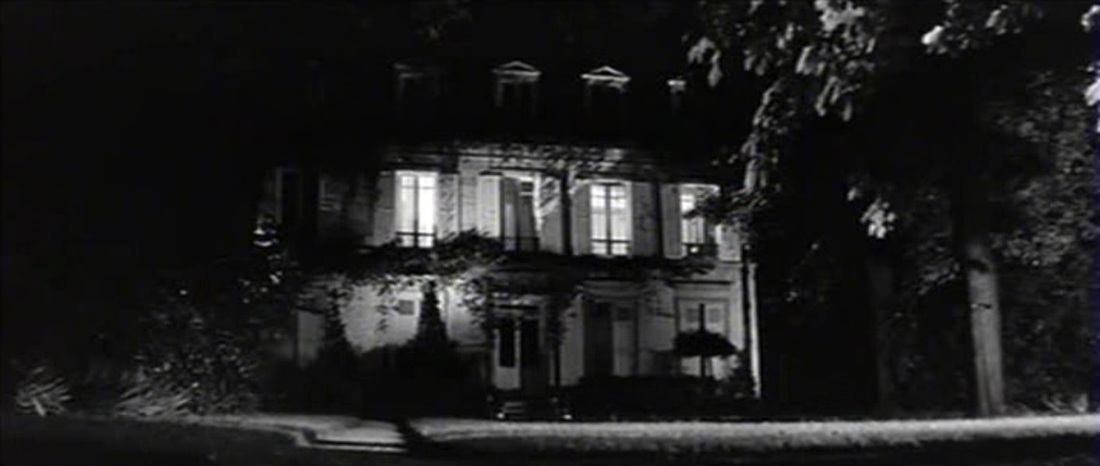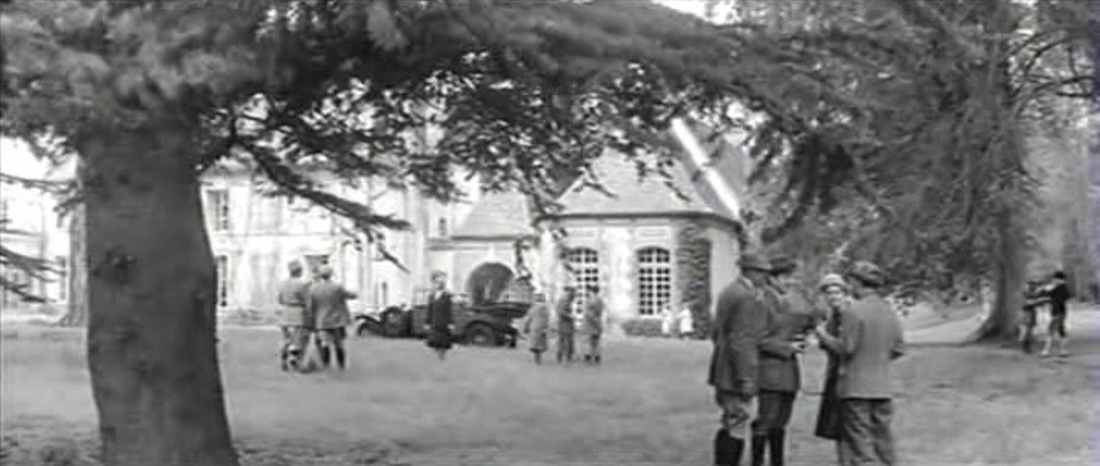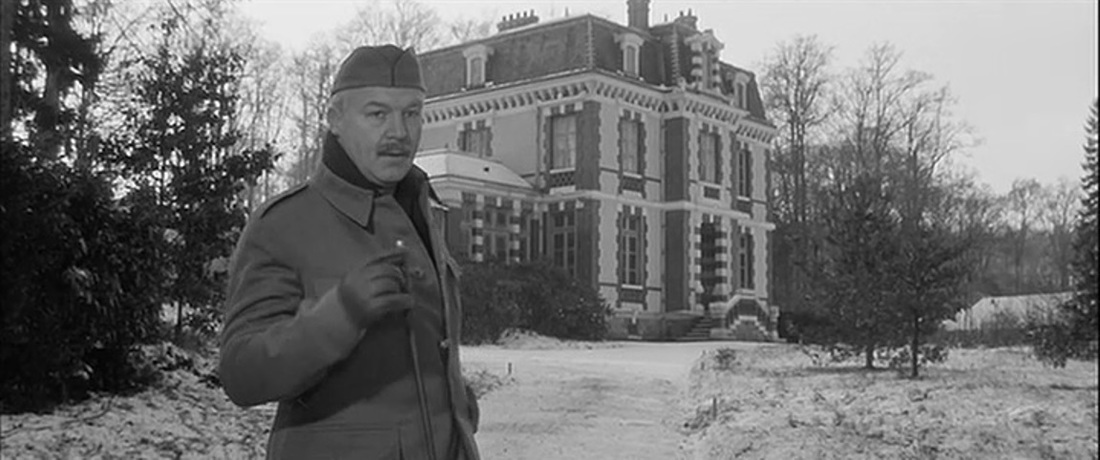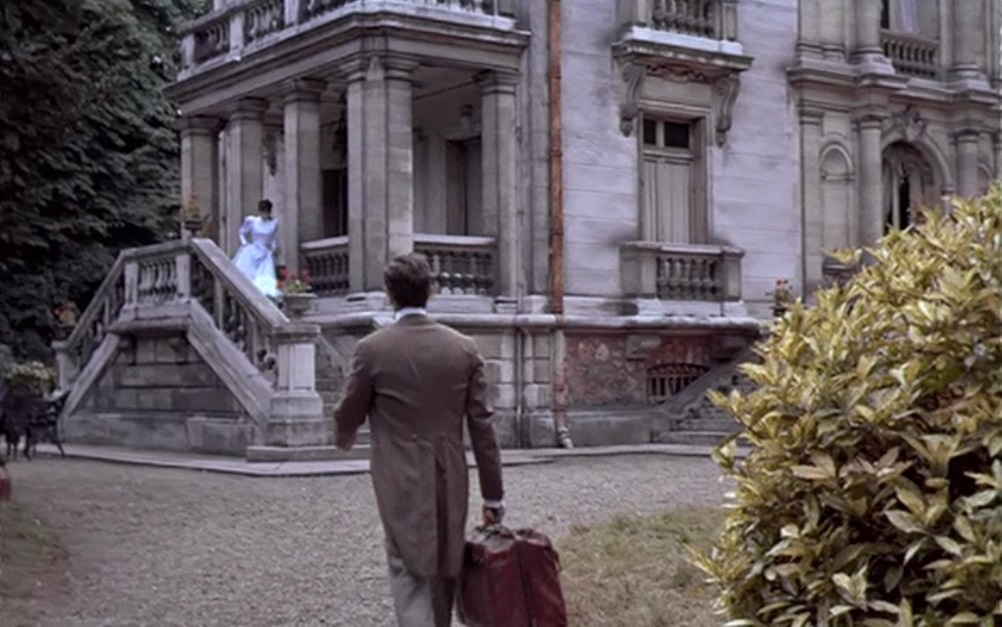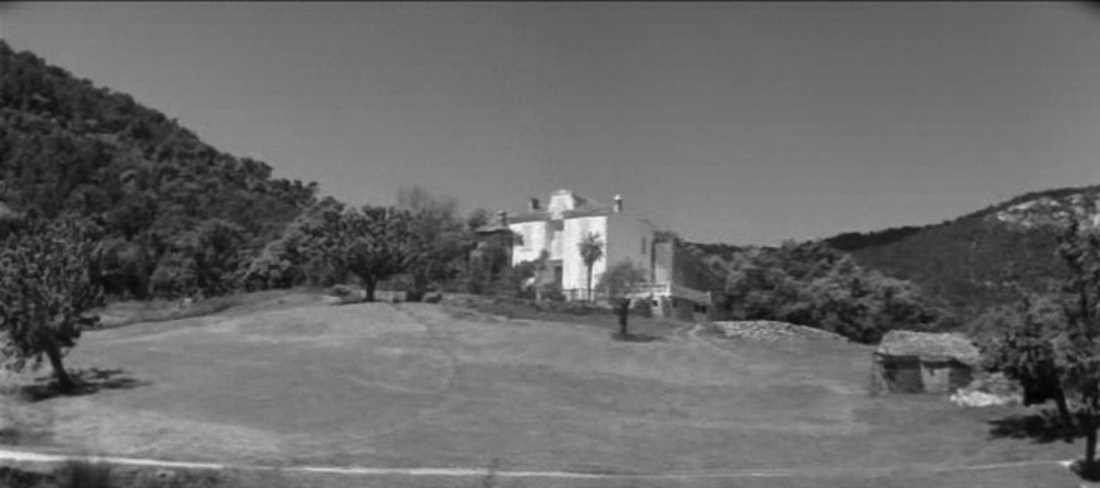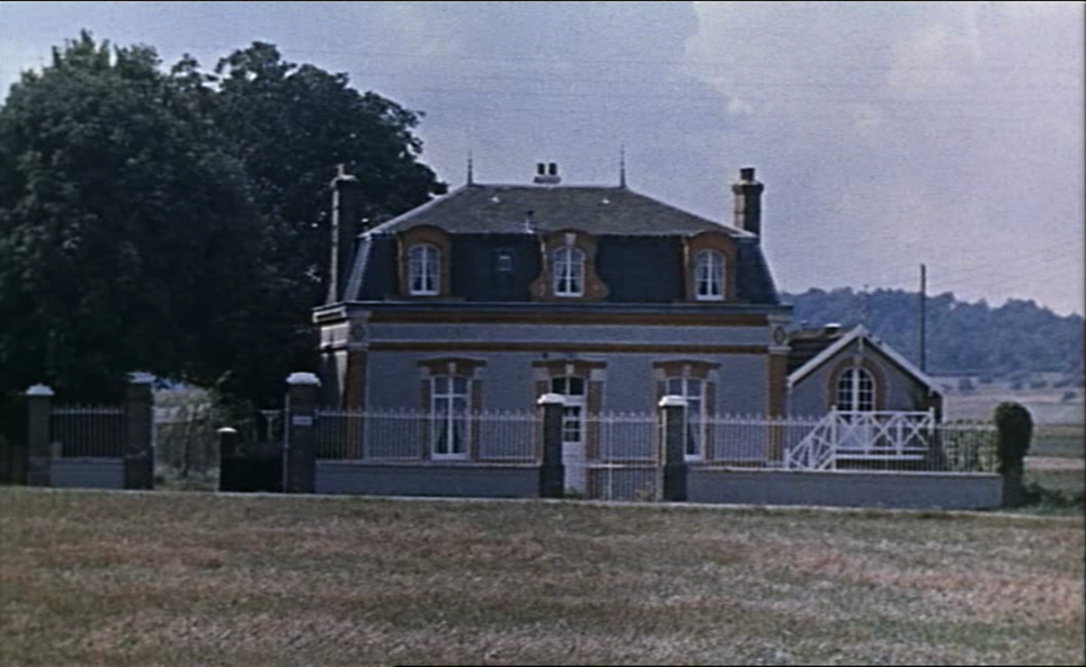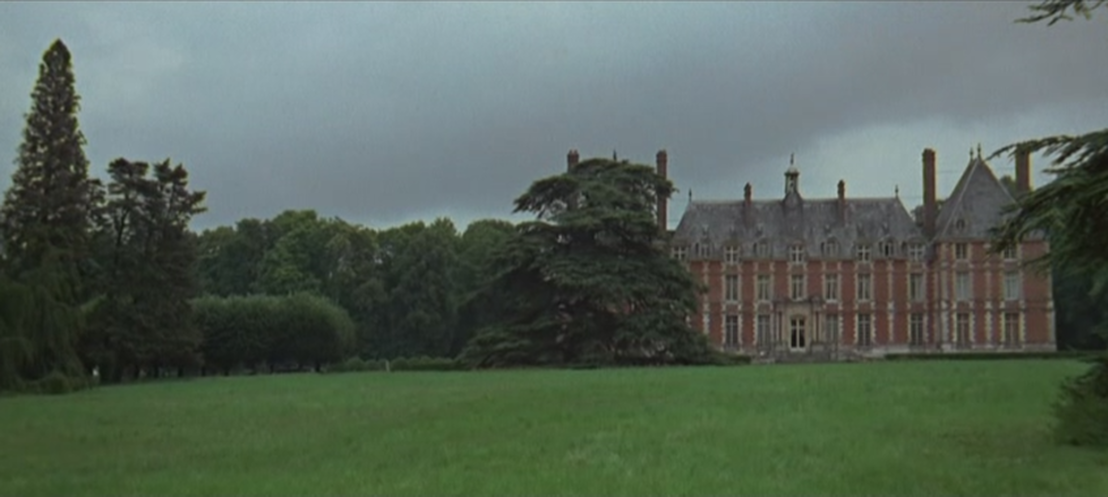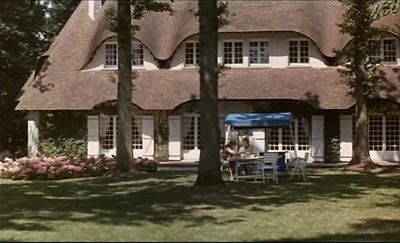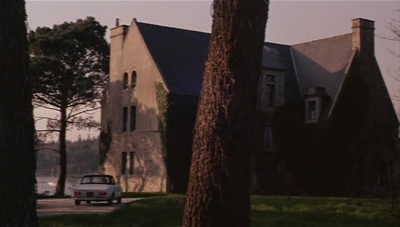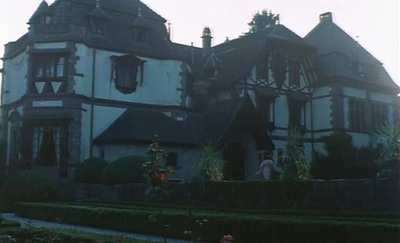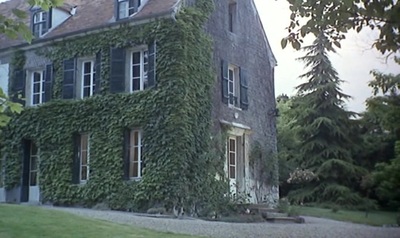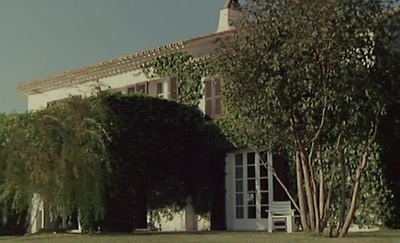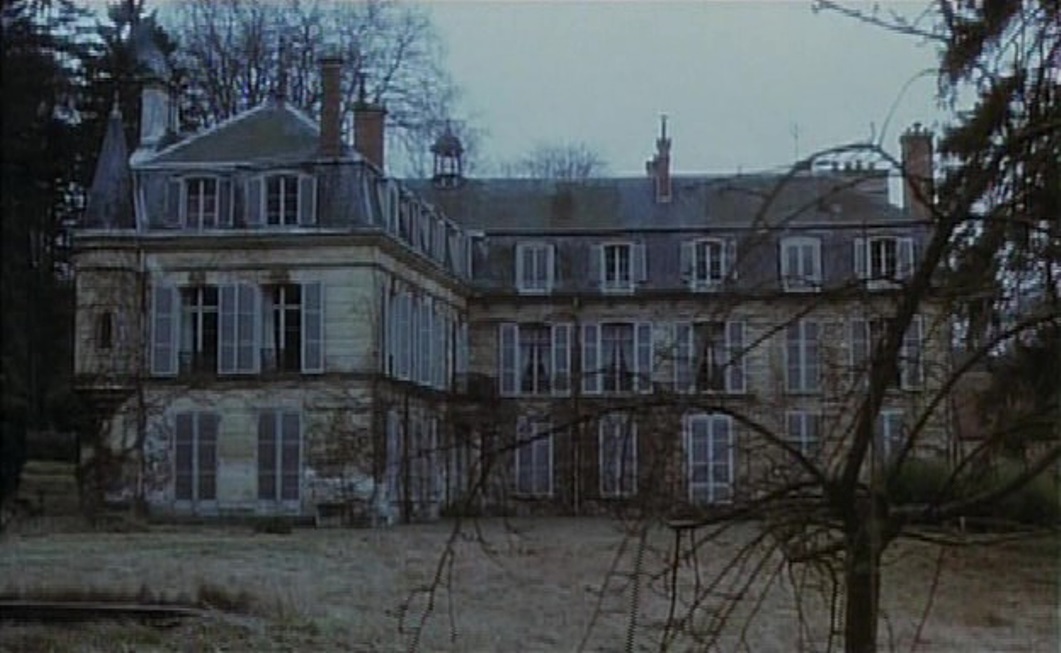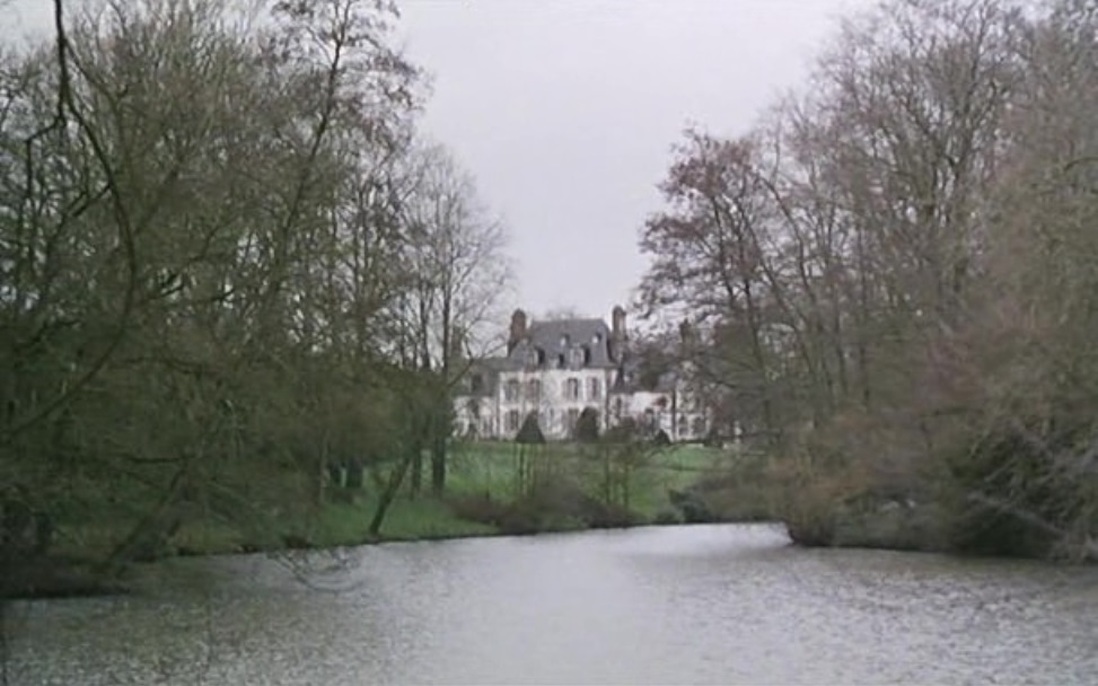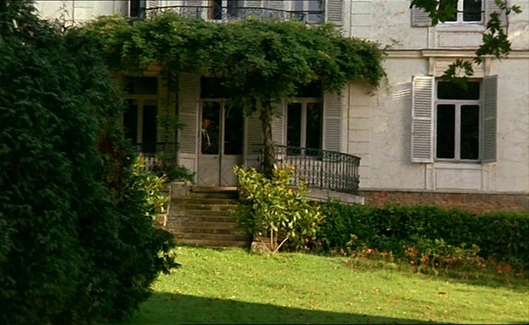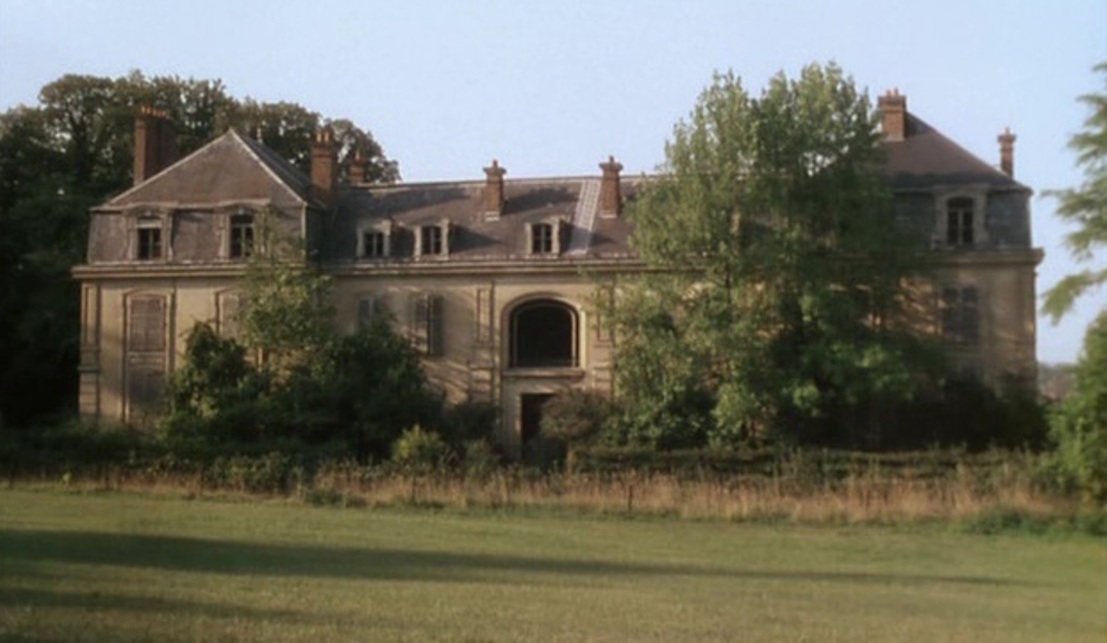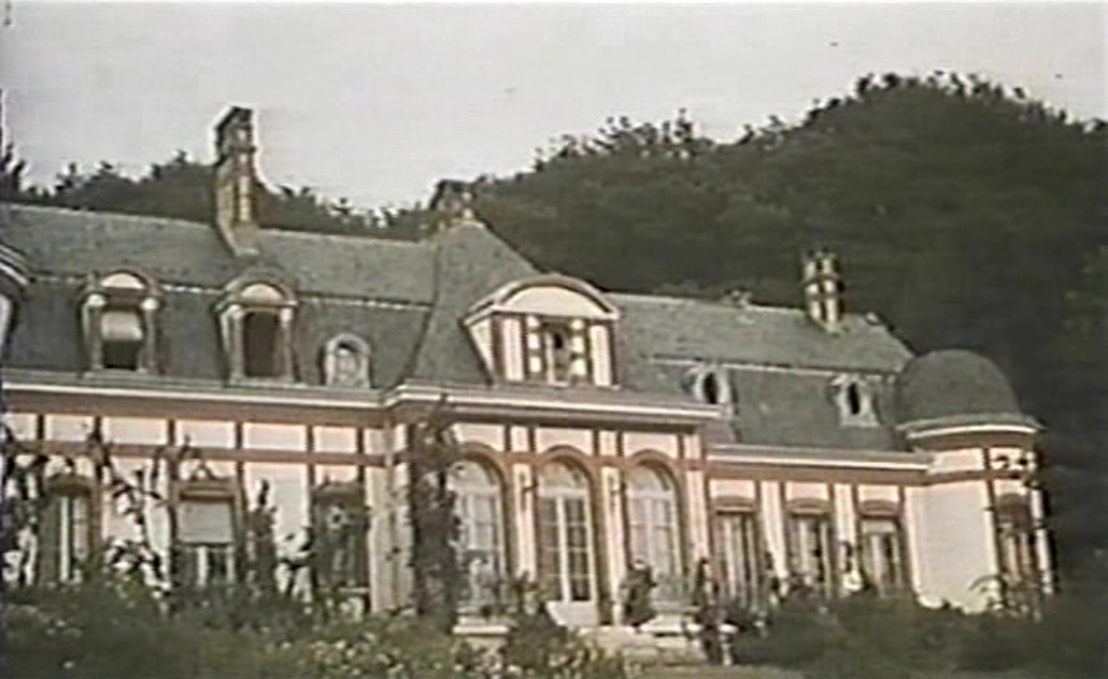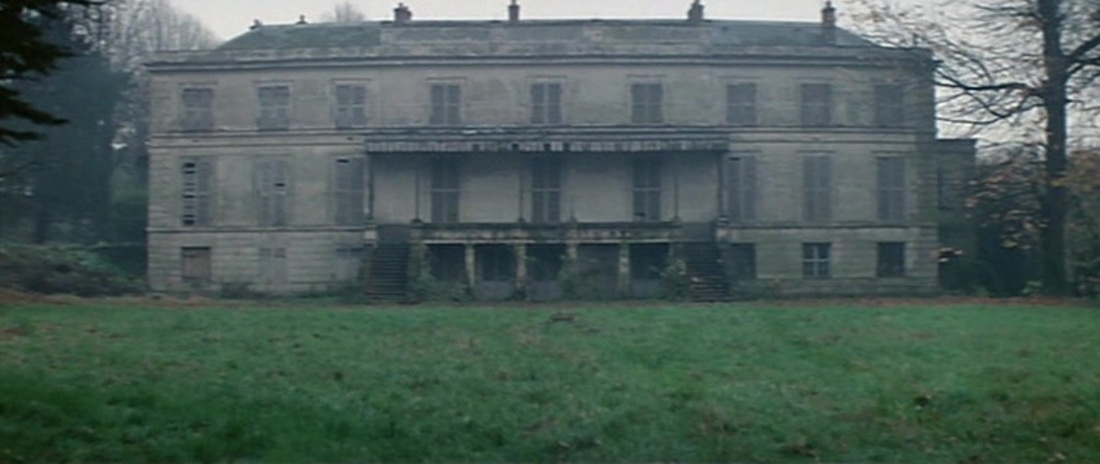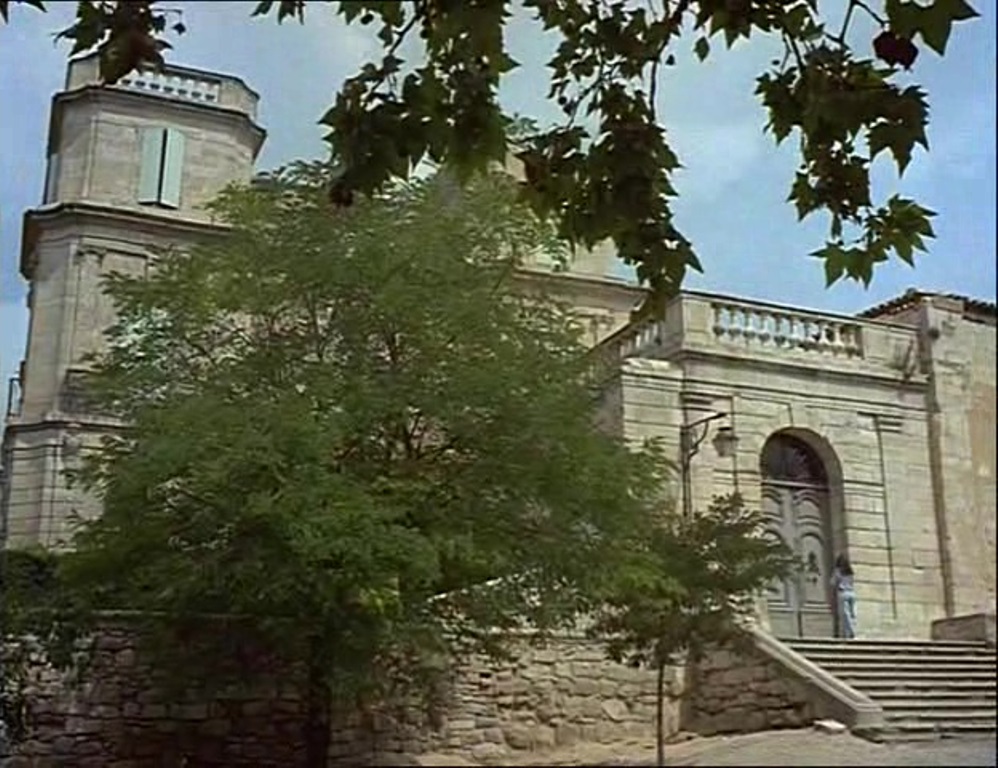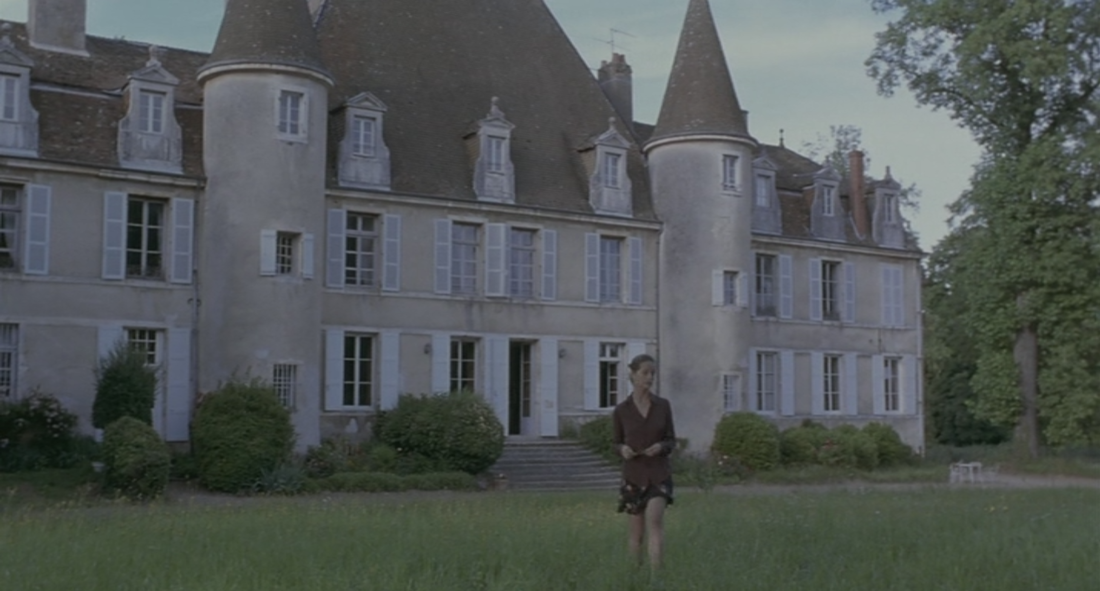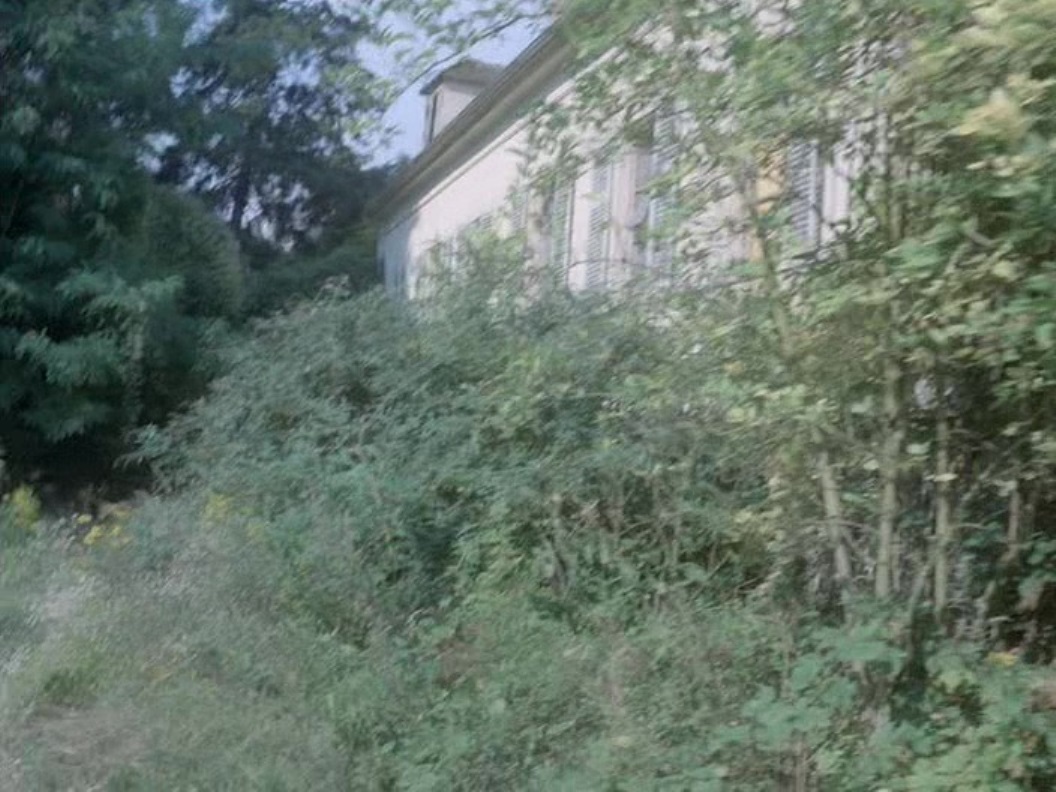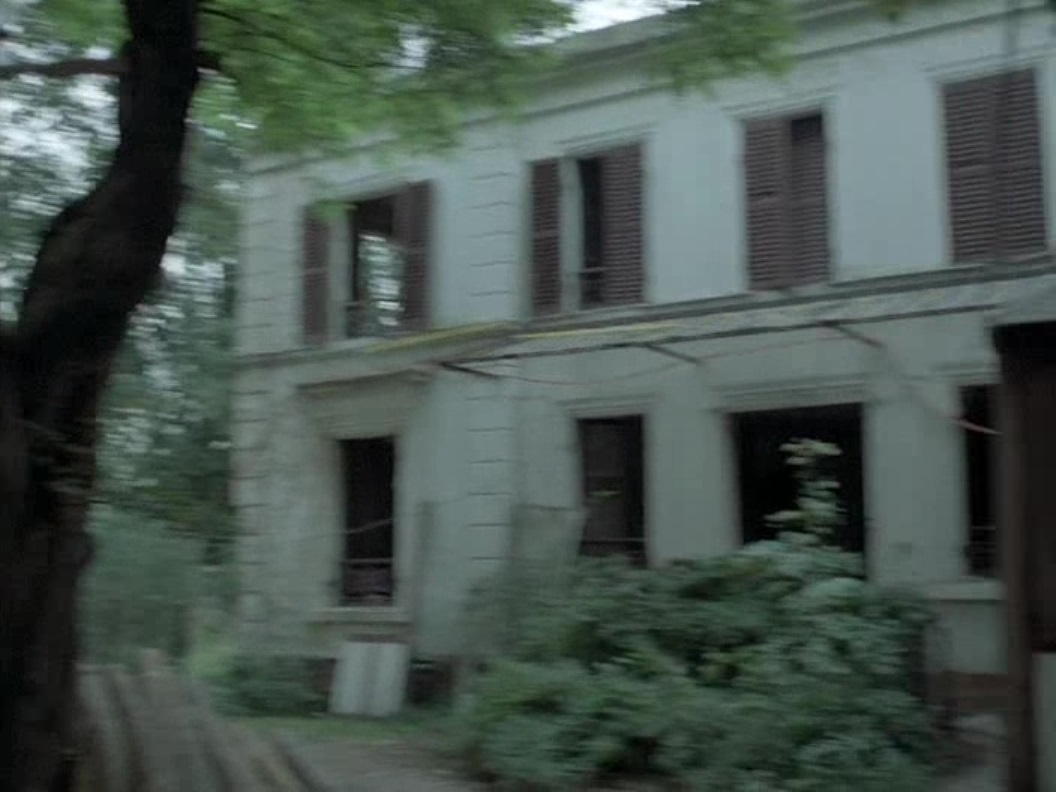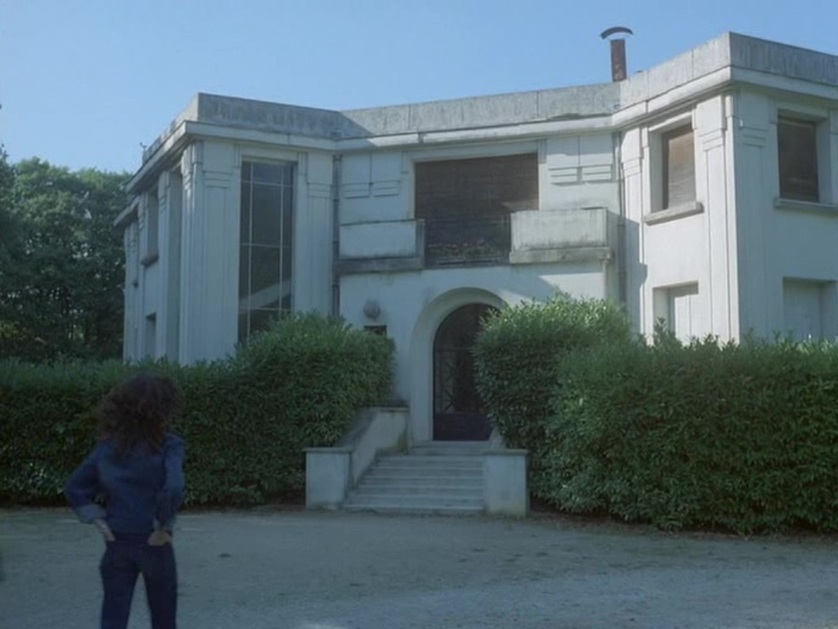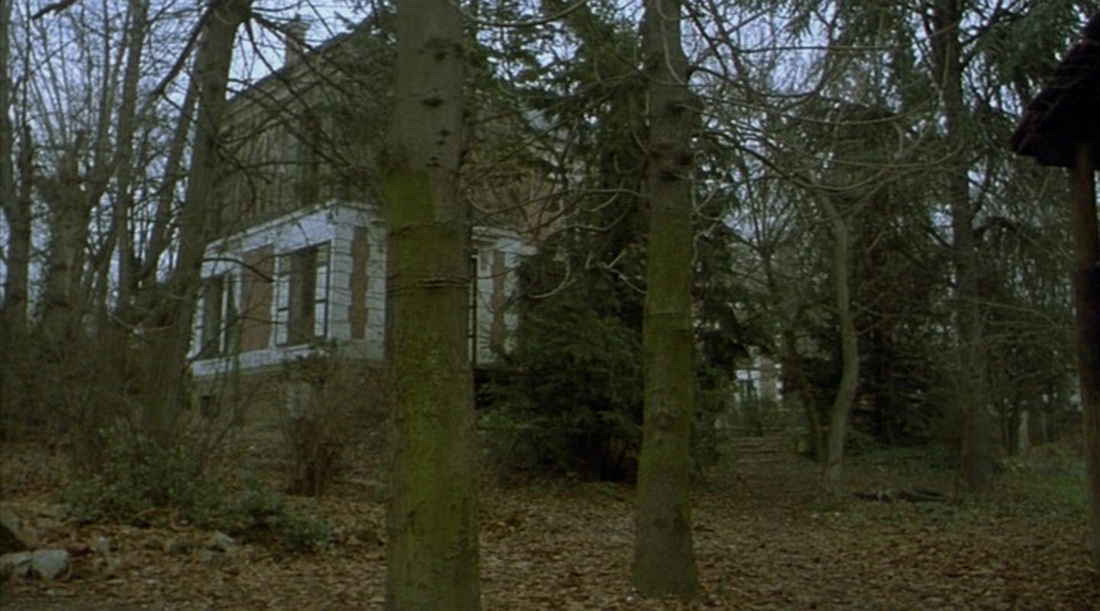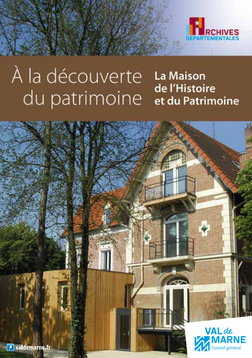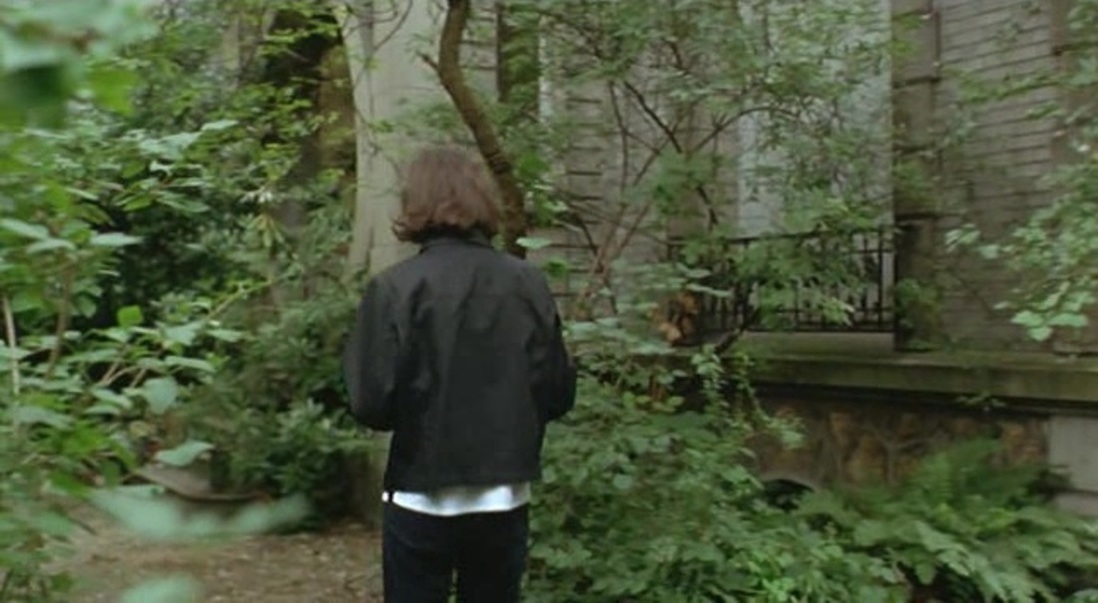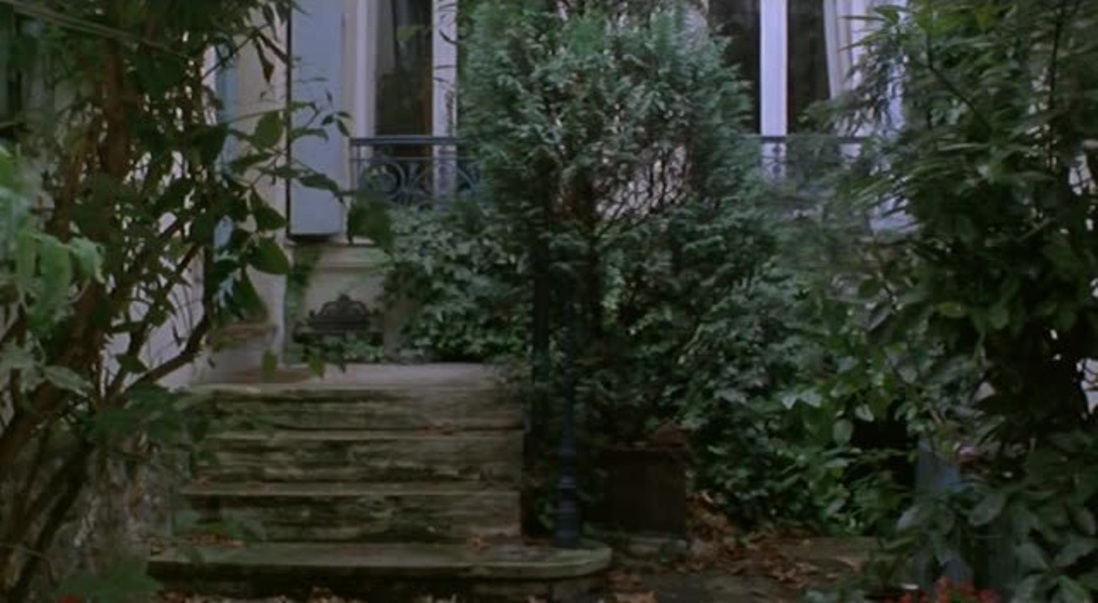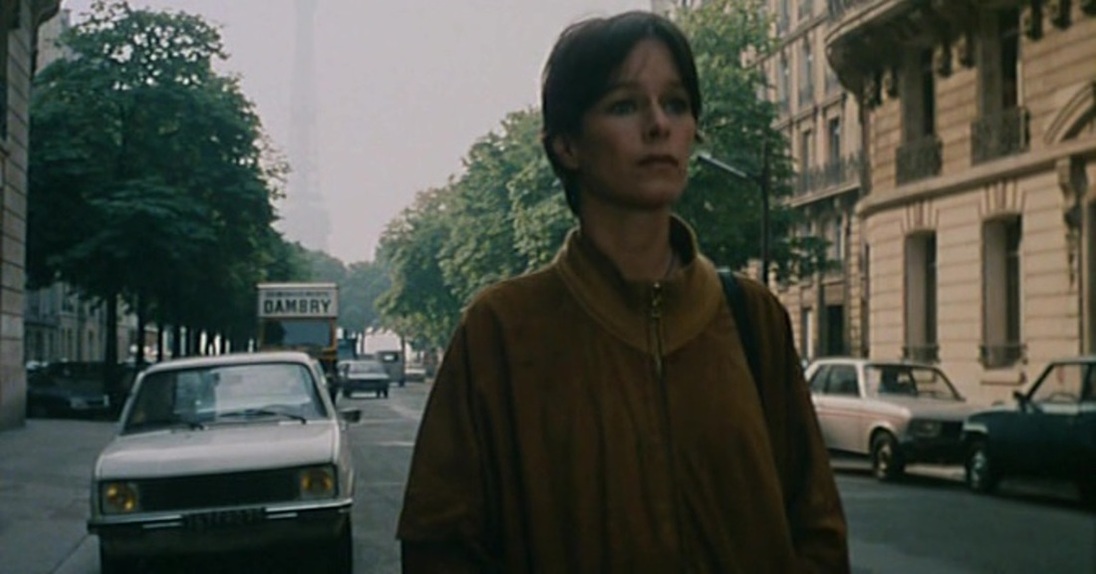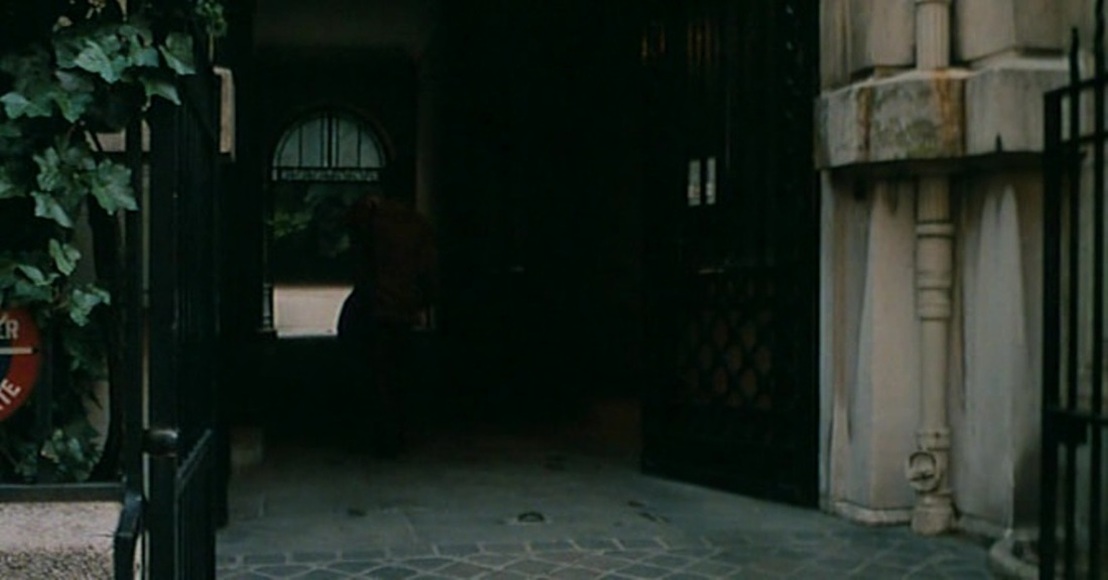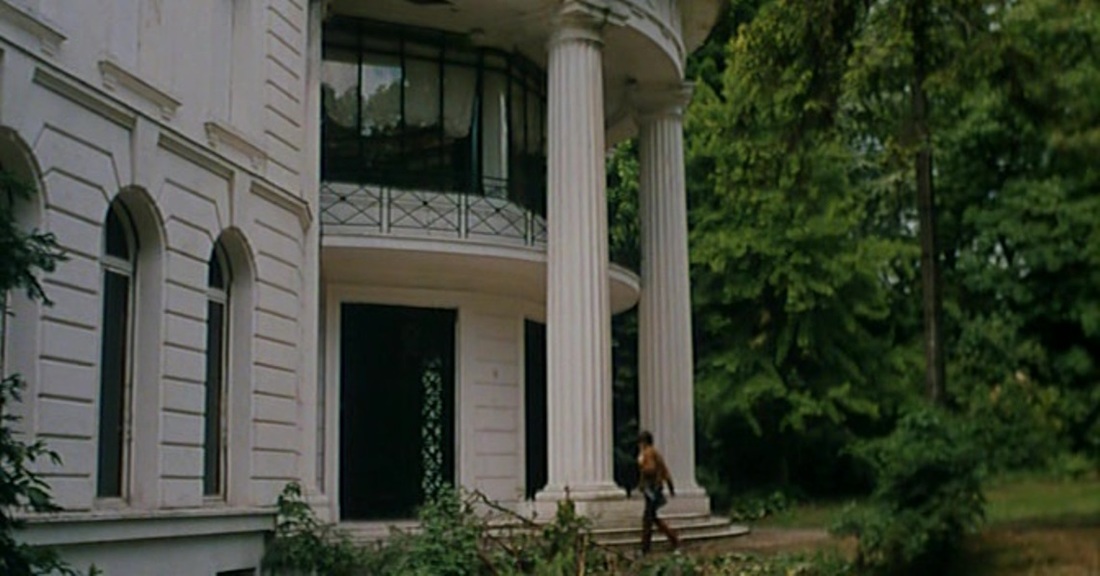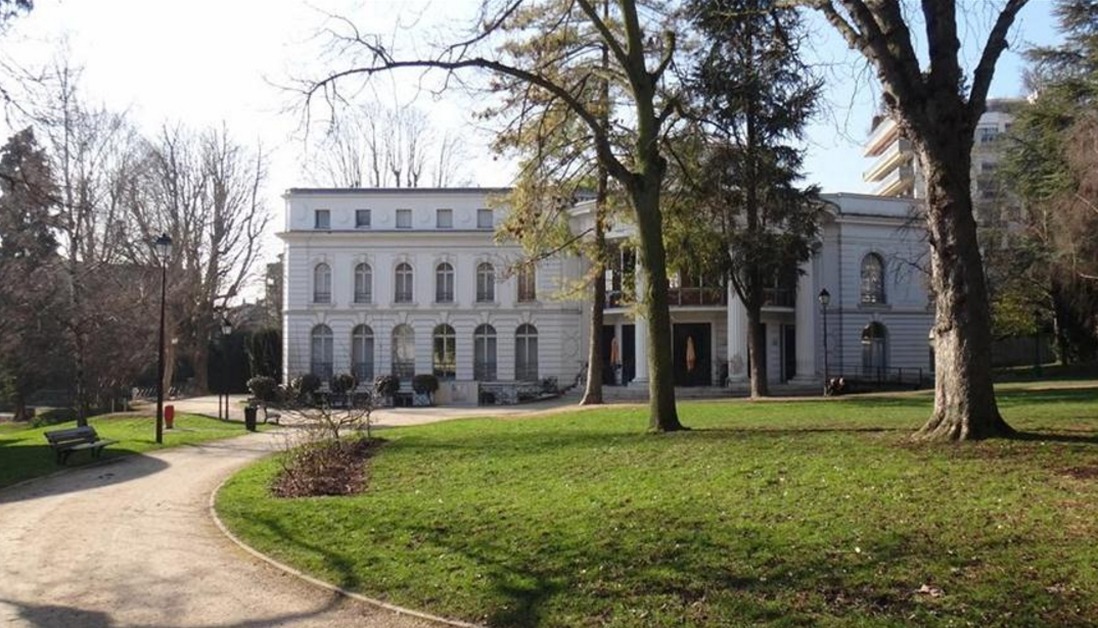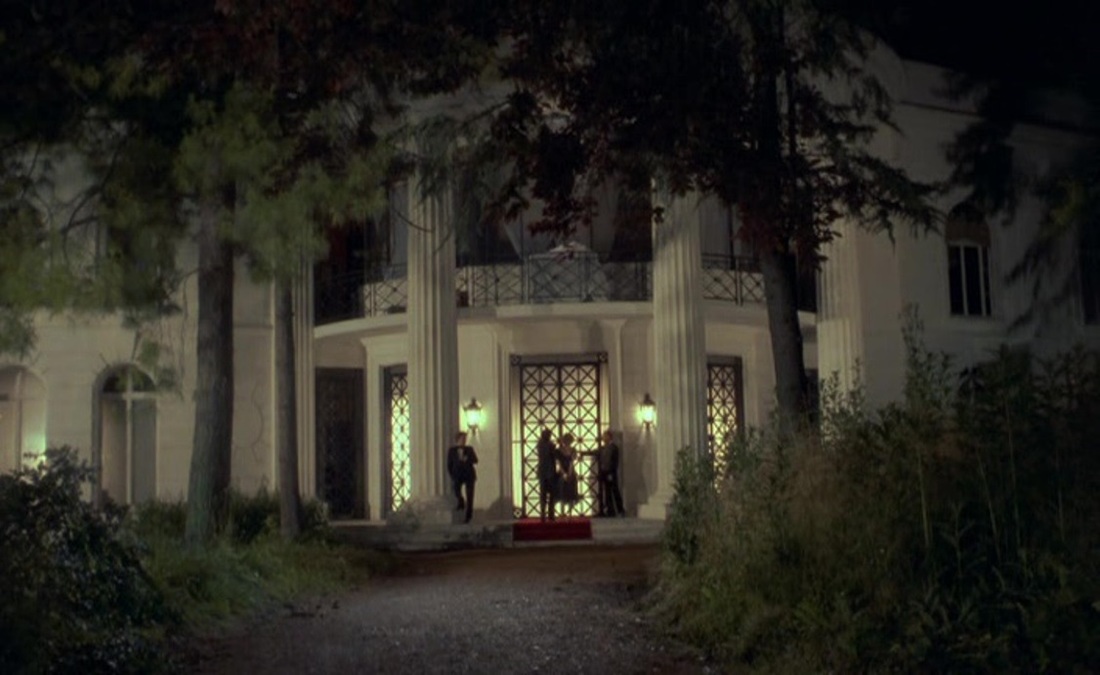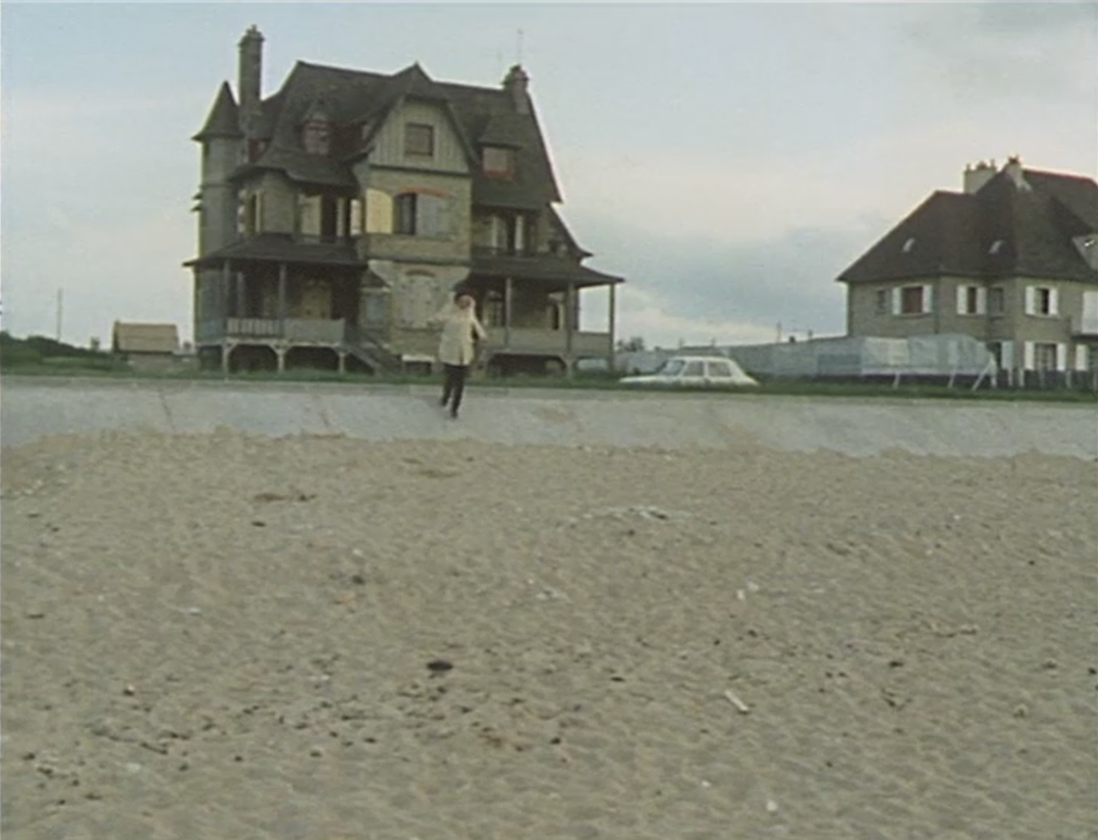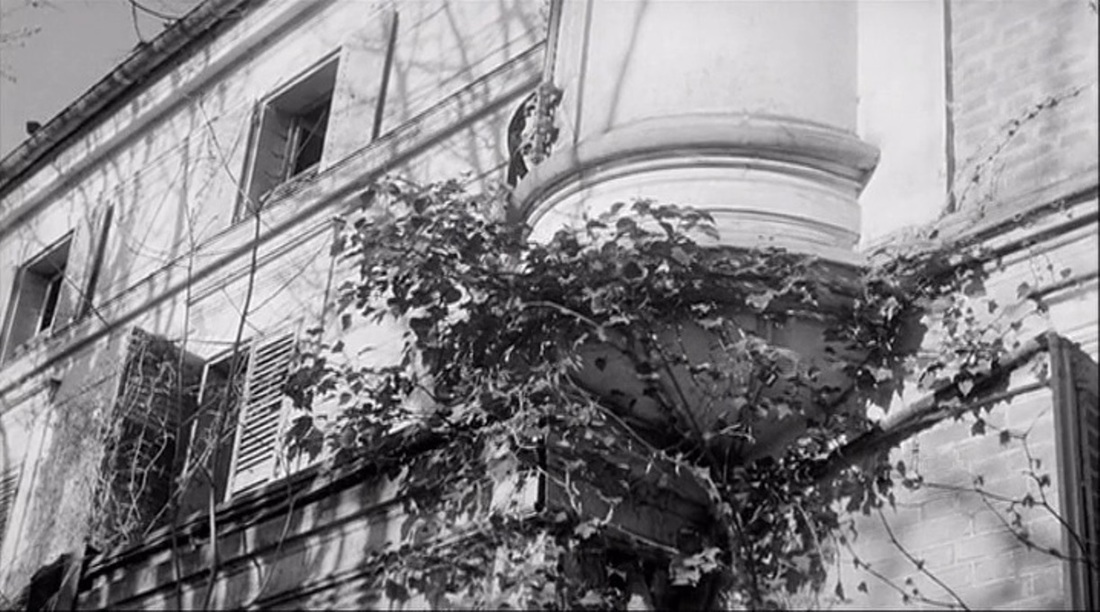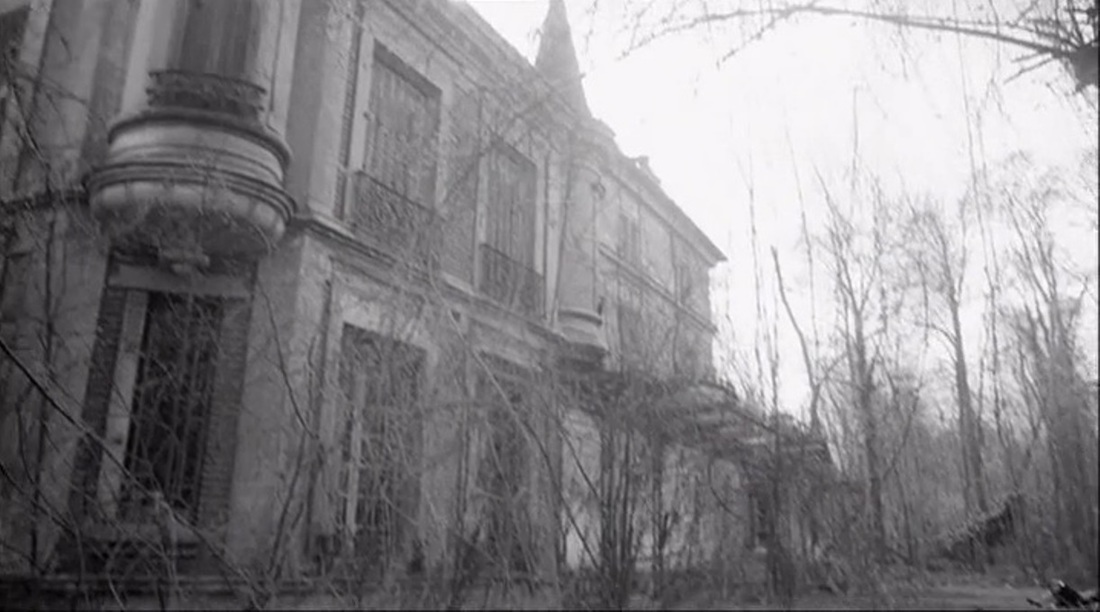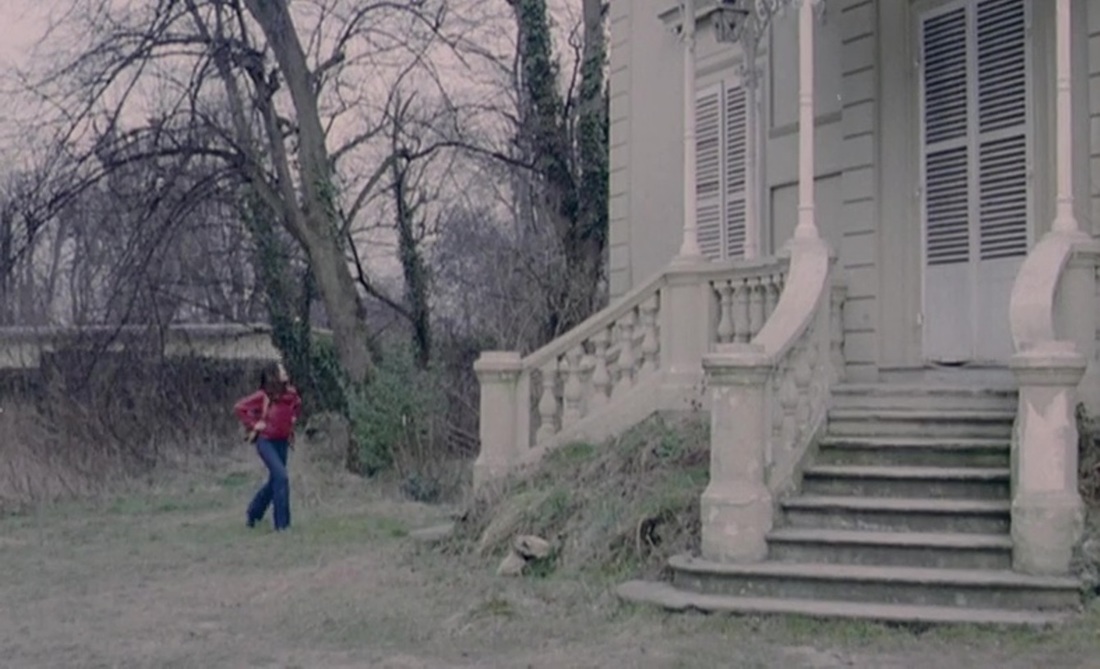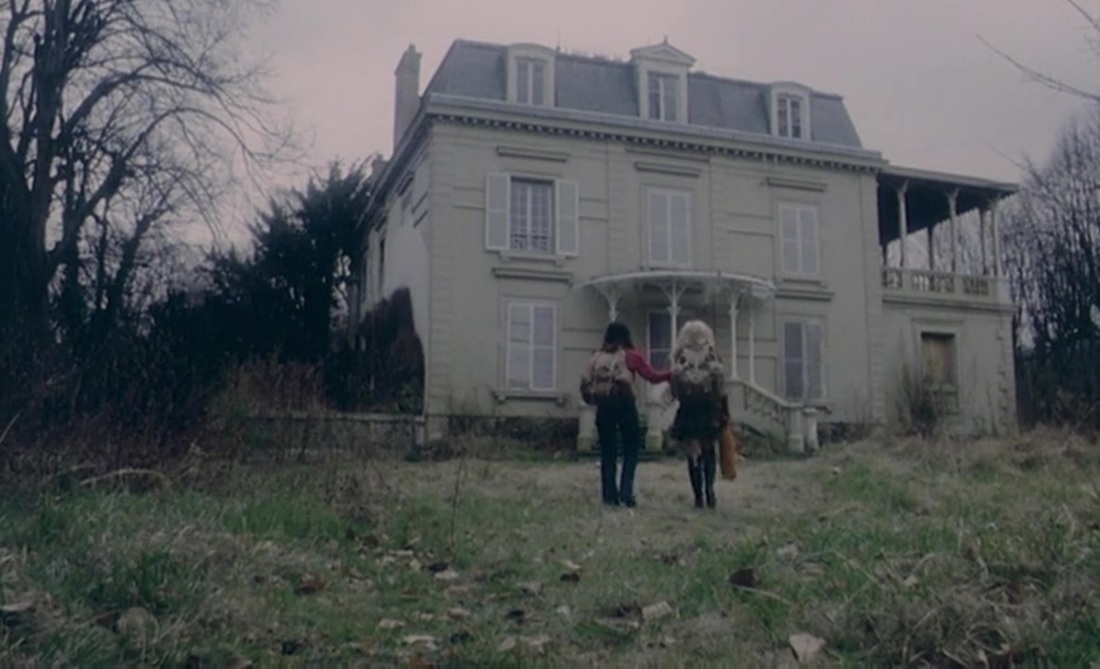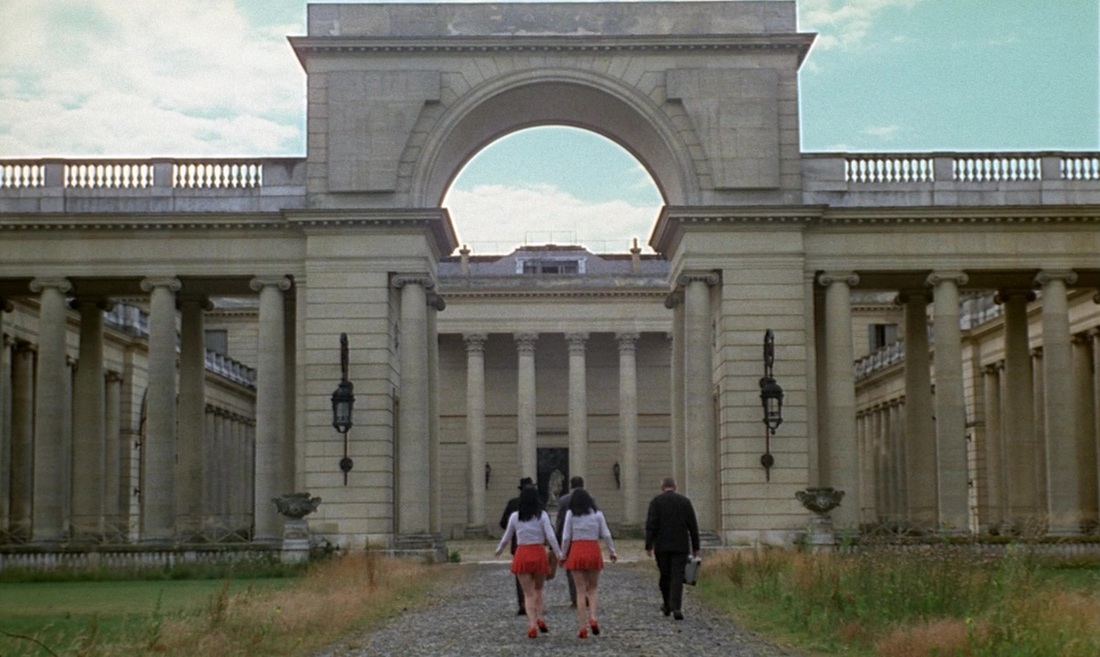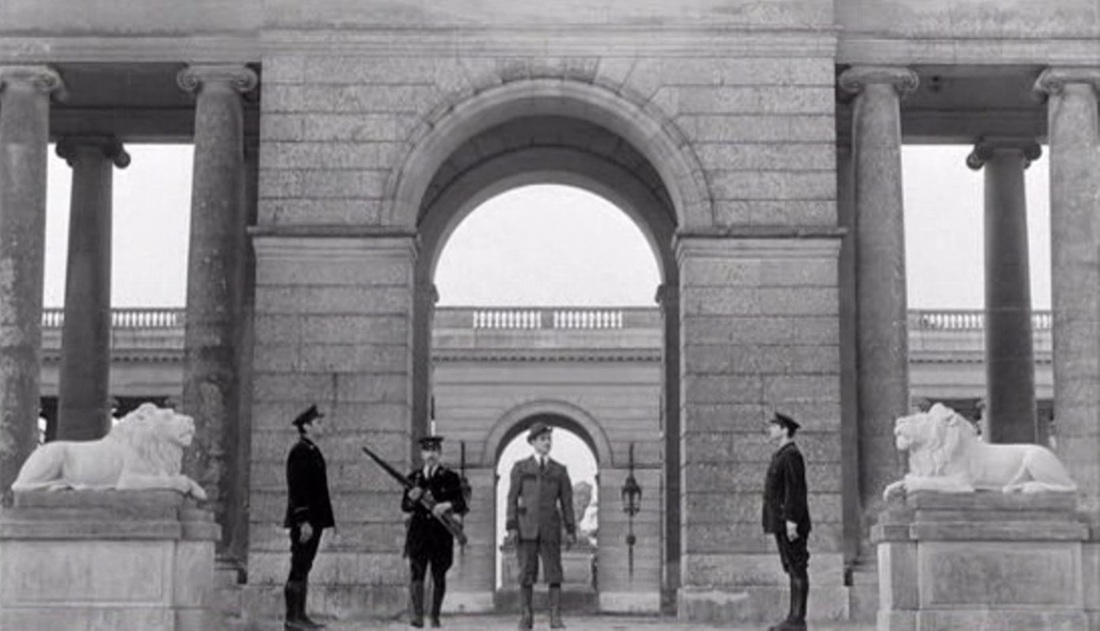|
country houses and suburban villas
(in and around the French New Wave) |
|
The earliest extant New Wave film to feature a country house or suburban villa is Eric Rohmer's 1954 short Bérénice, shot by Jacques Rivette in the grounds of the château at Bry-sur-Marne in which André and Janine Bazin occupied an apartment, and where for a while lived François Truffaut. The exteriors evoke well enough the 'gloomy, grey, hereditary halls' of Poe's horror story, though some of the darker interiors are those of a different building.
The gloomy mansion of Bérénice belongs to a rich tradition in French cinema, where the isolated house is a place of mystery or terror. Curiously, the ménagerie that the Bazins had assembled in their apartment connects this house to a different tradition, invoked in passing by Truffaut when he said that Bazin's squirrels were straight out of La Règle du jeu (Gilles Jacob, La Vie passera comme un rêve, p.126). Since the New Wave period and in large part because of the New Wave's acknowledgement of Jean Renoir as master and model, La Règle du jeu (1939) has become the model and type of the French country house film, where the gathering of characters under one roof generates drama.
Truffaut shows us Renoir's Paris home in Les 400 coups (1959), he names his production company in honour of Renoir's 1953 film Le Carrosse d'or, and in La Peau douce (1964) he pays tribute to La Règle du jeu by using the name that Renoir had given to the château, though 'La Colinière' in Truffaut's film is not a country house but just a modest country hotel:
In the New Wave period, the film most directly marked by La Règle du jeu is the not-quite-New Wave Les Amants (1958). Malle pays explicit homage by re-employing as a butler the gamekeeper of Renoir's La Colinière (Gaston Modot), and shapes his drama of adultery as a diminished version of the drama in La Règle du jeu. Similarly, the country house Malle uses is on a smaller scale than that used by Renoir:
Though many films since can be read through reference to the country-house setting of La Règle du jeu, before Les Amants only Renoir's own Elena et les hommes (1956) seems to signal the precedent. The country house here is the eighteenth-century château d'Ermenonville (Oise):
Les Amants is followed in 1959 by two New Wave films that, through theme and setting, again echo La Règle du jeu. Chabrol's A double tour is, like its precedents, focussed on middle-aged adultery; in Doniol-Valcroze's L'Eau à la bouche this shifts to the sexual liberties of twenty-somethings. Both films develop the masters-and-servants theme of La Règle du jeu, and share Bernadette Lafont in the role of sexually pursued maid.
The house in L'Eau à la bouche is the c.1900 château d'Aubiry, near Ceret (Pyrénées Orientales):
The house in L'Eau à la bouche is the c.1900 château d'Aubiry, near Ceret (Pyrénées Orientales):
In A double tour the house is somewhere near Aix-en-Provence (Bouches-du-Rhône), though I haven't found where exactly:
These two instances take the country house setting south, a movement the New Wave repeats in Truffaut's Jules et Jim (1962), Grisha Dabat's Et Satan conduit le bal (1962) and Rohmer's La Collectionneuse (1966):
Mediterranean villas become a familiar setting in post-New Wave films such as Chabrol's Les Biches (1968):
And Truffaut's La Sirène du Mississipi (1969):
The contrast is extreme between these sun-bathed locales and the gloomy country house of the type on view in Les Amants. Malle's setting is supposed to be Dijon, a bleak and lifeless provincial town. The actual location is an eighteenth-century château closer to Paris, near Mennecy (Essonne):
In 1962 Chabrol used a similar if larger eighteenth-century château as location for Ophélia, again in the Paris region (at Villepreux, Les Yvelines):
That same year José Bénazeraf centred Le Concerto de la peur on an eighteenth-century château at Bréau (Seine-et-Marne):
The suburban château in Pollet's La Ligne de mire (1959) is of a different type, pastiche Renaissance from the early twentieth century:
Pollet's château de Vitry doesn't in any way resemble Renoir's château de la Ferté Saint-Aubin, but Pollet's hunting scene, like most hunting scenes in French cinema, recollects the hunting scene of La Règle du jeu:
This cine-memory is apt in a film centred on remembering and revisiting its principal location, the château, a personal site of memory for the protagonist. It seems unlikely that Pollet's film is remembering a more recent and more public cine-moment, in Billy Wilder's Love in the Afternoon (1957), where Gary Cooper boats with Audrey Hepburn on the lake behind the same château:
When we see the lake in Pollet's film it is not a memory of the view in Wilder's film:
Pollet's cast includes Edith Scob from Les Yeux sans visage, but her presence in Pollet's château is not a cine-memory - La Ligne de mire was completed by May 1959, and Franju's film wasn't screened until January 1960. Nonetheless, we can't help but think of Christiane when we see Pascale:
The doctor's home in Les Yeux sans visage is not unlike the château in La Ligne de mire, nineteenth-century (built 1873) but with mock-Renaissance features:
The doctor's clinic, on the other hand, dates from the seventeenth century:
(For more on the locations of Les Yeux sans visage see here.)
By 1911 the lonely villa or château is more likely to be a real exterior, and will feature as much in dramas as in comedies. See, for example, Feuillade's La Maison hantée (1911), a real if (as yet) unidentified haunted house:
In Feuillade's L'Oubliette (1912) a woman is rescued from a secret dungeon at the château de Maison Rouge in Gagny:
In episode one of Feuillade's Les Vampires (1915) the severed head of a police inspector is found at the residence of the sinister Doctor Nox, filmed at a suburban villa in Vaucresson:
Feuillade uses this villa again in episode five of Barrabas (1919), as the clinic of the equally sinister Dr Lucius. The country house as clinic - usually but not always sinister - is a recurring sub-motif in this tradition:
Three of Franju's films in the five years following Les Yeux sans visage have country house settings. In scale and antiquity the medieval château de la Bretesche featured in Pleins feux sur l'assassin (1961) is very different from the locations discussed hitherto, but as narrative pretext it is close to the model of La Règle du jeu:
Franju's Judex (1963) follows the narrative line of Feuillade's Judex from 1917, though the country house Franju uses is grander:
Franju's Thomas l'imposteur (1965) features two houses of the type discussed here. The first is, according to the narrative, a château within Paris, transformed into a hospital for the war-wounded - the film opens in 1914. Though a view through a window of the Eiffel Tower confirms the Paris setting, the château's wooded grounds remove it from that urban context - and the location is actually at Louveciennes, about 25 kilometres from Paris:
The other château appears in a sequence showing destruction from German bombardment near the Front:
This looks like a real building, genuinely destroyed, rather than a set, but I haven't yet located it. The film includes brief views of other buildings destroyed beyond repair - vestiges, I would guess, of the second rather than the first world war:
This château on the right had already been used to show first-world-war ravages in Jean-Louis Richard's Mata Hari agent H21 (1964) - in a more advanced state of ruin, oddly:
Mata Hari and Thomas l'imposteur can, along with Franju's Judex, be grouped with several other films from the New Wave period that are set in the first decades of the century, feature country houses and are in some way marked by the influence of either Feuillade or Renoir. Some are both Feuilladian and Renoiresque:
These are all at best peripheral to the New Wave; more central are the 'dreamed-of house, too big, but isolated, a little solemn' of Truffaut's Jules et Jim and the 'modest gentilhommière' of Chabrol's Landru:
These two period films are an anomaly in the New Wave corpus, which is chiefly a cinema of the present. The New Wave is also thought of, rightly, as a cinema of the urban, which makes it unsurprising that country houses and suburban villas feature in only about 20 of the corpus's 150 or so films. In the post-New Wave films of some directors the proportions are very different, with Chabrol, for instance, as he shifts his interest from the city to the provinces. He does so spectacularly with the sixteenth-century château de Rosny in Le Scandale (1967):
Here are some more modest country houses in Chabrol films between 1968 and 1975:
The grander scale returns in Folies bourgeoises (1976), filmed at the château d'Arqueville, at Villennes (78):
And later in La Cérémonie (1995), filmed at the eighteenth-century Hourbarderie, near Saint Malo:
Chabrol's exposures of bourgeois folly in country houses or suburban villas align his post-New Wave work alongside that of several filmmakers without New Wave credentials. See, for example, Michel Deville's Péril en la demeure (1985), or Jacques Rouffio's Mon beau-frère a tué ma soeur (1986):
Chabrol's Alice ou la dernière fugue (1977) is aligned to a different tradition, that of supernatural mystery:
It is akin, for example, to Juan-Luis Bunuel's Au rendezvous de la mort joyeuse (1973):
And to Eduardo de Gregorio's Sérail (1976):
Sérail is a kind of sequel to Rivette's Céline et Julie vont en bateau (1974), which was written by Gregorio, though there the mystery pervades a suburban villa rather than a country château (see here for the address):
Châteaux on a grand scale do occasionally feature in Rivette's own films. Here, in La Belle Noiseuse (1991), is the château d'Assas, near Montpellier:
And here, in Secret défense (1998), is the château de la Tour Bandin at Montagny-les-Buxy (71):
But it is suburban villas that are particularly Rivettian, as 60 years before that they were Feuilladian. In the course of its investigations into the suburbs of Paris, Merry go round (1977-78) visits four villas, two of which are in a state of ruin:
Of the other two villas one I haven't located yet, but it is of a familiar eighteenth-century type (below left). The other. below right, is a highly distinctive edifice from 1930:
The architect is Paul Robine, and the villa can be explored in detail through Rivette's film or in an estate agent's video, here.
Two very similar villas in the Paris suburbs are settings in two later films, La Bande des quatre (1989) and Histoire de Marie et Julien (2003):
|
The first is supposed to be in Montfermeil, though I haven't found it there yet.
The second is in Champigny-sur-Marne, and serves now as a centre for the history and patrimoine of the Val de Marne (right). The shooting of Rivette's film here in 2002 is listed among the key dates in the building's history. |
A suburban villa in Haut bas fragile (1995) is presented in the same kind of leafy surrounds, and prompts a character to say that 'here, you'd think you were in the countryside':
This is Neuilly, which is almost Paris. Another house in this film that is actually in Paris is presented in a similar way, as a quasi-suburban enclave within the urban:
Rivette's most dramatic conflation of urban and suburban comes in L'amour par terre (1983). A character is on the avenue d'Eylau, behind the palais de Chaillot, with the Eiffel Tower just visible in the distance:
She goes through a doorway at number 14 and finds what at first looks like a characteristically Rivettian suburban villa, veiled in greenery:
I have not been through the doorway at 14 avenue d'Eylau to know whether there is a space of this kind there - it is entirely possible, especially in this district - but in fact between the two shots above the film has moved from Paris's 16th arrondissement to the western suburb of Saint Cloud, more specifically to a 1930s mock-Palladian villa, now the Musée des Avelines:
At around the same time this location is was also used by Jean-Pierre Rappeneau in Tout feu tout flamme (1982) and Christopher Frank in Femmes de personne (1984), and more significantly by Alain Robbe-Grillet in La Belle Captive (1983):
In both Rivette and Robbe-Grillet the villa is a space of mystery, tinged with the supernatural. A similar atmosphere hangs over all of Rivette's villas and châteaux, beginning with the haunted coast-side villa in Out 1 (1971).
The haunted houses in Céline et Julie vont un bateau, La Bande des quatre and Histoire de Marie et Julien all belong to the tradition that we first saw with Segundo de Chomon in 1908 and Feuillade in 1911. This kind of narrative in this kind of locale is one of the signs of Rivette moving beyond New Wave norms - there aren't any haunted houses in New Wave cinema.
I don't think there are haunted houses in the post-New Wave films of any New Wave filmmakers except Rivette (email me here if you can think of one, please). Likewise, though this post began with Rohmer's adaptation of a horror story, I don't think there is any horror in the films of New Wave filmmakers (again, please email me if I've missed something). If Rohmer's Bérénice is the only horror film we can associate with the New Wave that may not be regrettable (it's not a very good film), but it says something about the New Wave's interest in genres. There are New Wave musicals (Les Parapluies de Cherbourg, parts of Pierrot le fou), New Wave gangster films (Tirez sur le pianiste, Bande à part, Joe Caligula), New Wave political thrillers (Le Petit Soldat, Le Combat dans l'île, La Dénonciation), New Wave science fictions (La Jetée, Il mondo nuovo, Alphaville, Fahrenheit 451, Anticipation), New Wave war films (Les Carabiniers, bits of Jules et Jim, Mata Hari) and New Wave sex comedies (Les Jeux de l'amour, Une femme est une femme); Le Mépris might pass as a New Wave epic; Bénazéraf's work points to what New Wave pornography would be like; and in my view the work of Pierre Etaix is New Wave slapstick. But there is no New Wave horror. The closest thing is the work of Jean Rollin, beginning with Le Viol du vampire in 1968.
Rollin is a master of country house horror, and though a detailed examination of the suburban villas, country houses and fully fledged castles in his films would have to be the subject of another post, I'll end this one with a few samples of Rollin's belles demeures.
Here, from Le Viol du vampire, is the château de Gressy, Les Yvelines, filmed from the same sort of angles that Rohmer used for Bazin's château at Bry-sur-Marne:
Rollin is a master of country house horror, and though a detailed examination of the suburban villas, country houses and fully fledged castles in his films would have to be the subject of another post, I'll end this one with a few samples of Rollin's belles demeures.
Here, from Le Viol du vampire, is the château de Gressy, Les Yvelines, filmed from the same sort of angles that Rohmer used for Bazin's château at Bry-sur-Marne:
This is Rollin's Jeunes filles impudiques (1973), but it could be a film by Rivette:
And here, from La Vampire nue (1970), is the château de Porges at Rochefort-en-Yvelines, previously seen in Pierre Etaix's Yoyo (1965):
(Etaix is here remembering La Règle du jeu, of course.)
